Midland

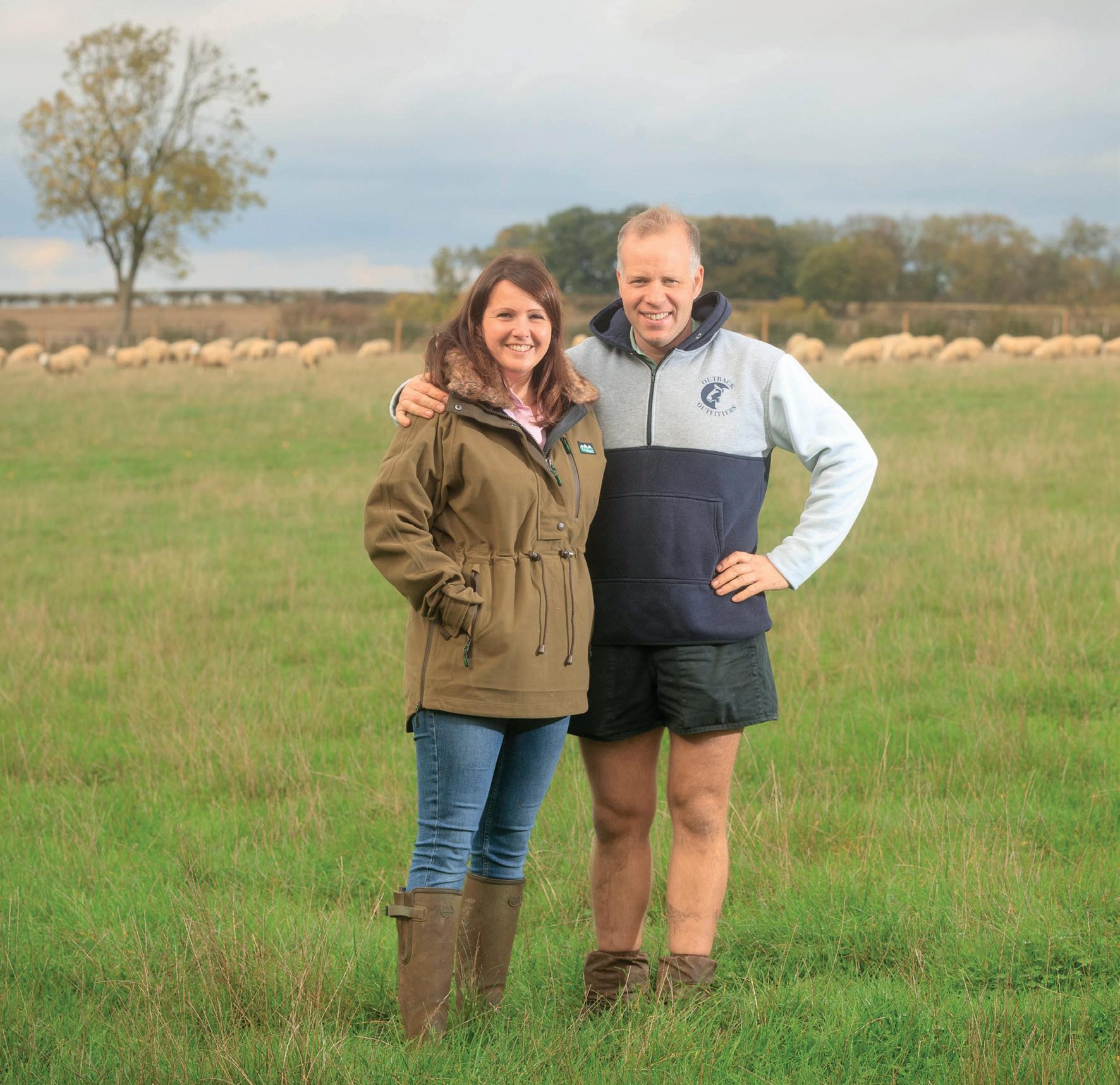
News
Fields left fallow after wet winter
Arable
Breeder launches UK hybrid barley
Sugar beet
High-pressure virus year for growers
Livestock
Animal health and welfare grants
Grass and Forage
Prepare now for first cut silage
Clodhopper
No need for speed on rural roads








April 2024
Tel: 01480 495956 www.flr-cropdrying.com
Lamb-tastic: Lincolnshire couple make success out of sheep


SJ STANBERRY&SONSLTD



See us at Agri Expo -March 7th

























See us at Agri Expo -March 7th




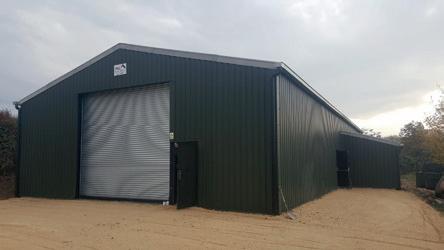











•INDUSTRIAL, AGRICULTURAL OR COMMERCIAL TERNAL OR EXTERNAL
•INDUSTRIAL, AGRICULTURAL OR COMMERCIAL
•INTERNAL OR EXTERNAL

•STEEL FIXING
01945
USH, TAMP OR POWER
•STEEL FIXING
TANK BASES
FLOATFINISHES
•BRUSH, TAMP OR POWER
• GRAIN, POTATO & MACHINERY STORES
•STEEL FIXING USH, TAMP OR POWER FLOATFINISHES
FLOATFINISHES
•FOUNDATIONS
• PATHS, PATIOS, DRIVEWAYS
•
•FOUNDATIONS
POULTRYUNITS AND STABLE YARDS

•FOUNDATIONS
• POULTRYUNITS AND STABLE YARDS
MATERIAL ADVICE AND COSTING
• POULTRYUNITS AND STABLE YARDS
AND COSTING
• MATERIAL ADVICE AND COSTING
MATERIAL ADVICE AND COSTING
•SILO BASES
•SILO BASES
•SILO BASES
•SILO BASES
RONS &SHED FLOORS
RONS &SHED
•GROUNDWORKS & PREPARATION Concrete
PRONS &SHED FLOORS
•APRONS &SHED FLOORS
•ANAEROBIC DIGESTION
NAEROBIC DIGESTION TANK BASES
•ANAEROBIC DIGESTION TANK BASES
TANK BASES
•GRAIN, POTATO& MACHINERYSTORES
•GRAIN, POTATO& MACHINERYSTORES
•PATHS, PATIOS AND DRIVEWAYS
•GRAIN, POTATO& MACHINERYSTORES
•PATHS, PATIOS AND DRIVEWAYS
•PATHS, PATIOS AND DRIVEWAYS

•GROUNDWORKS & PREPARATION
•GROUNDWORKS & PREPARATION




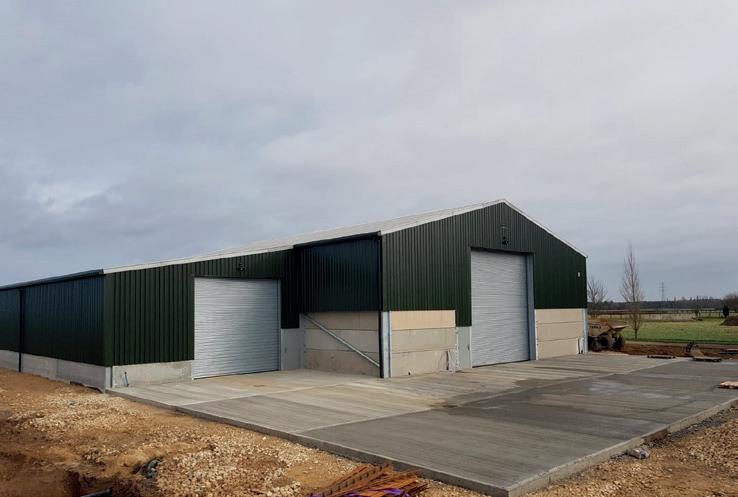




www.agriculturalbuildingconstruction.co.uk Email: info@agriculturalbuildingconstruction.co.uk Tel: 07981 031613 / 01945 660231 | Wisbech, Cambs So why should you call us today? • Competitive rates • All work fully insured Skilled, committed staff • Highly professional service • Plant hire available with operator Agricultural Building Construction Ltd operate nationwide, providing steel framed buildings with associated groundworks. Our aim is to provide a high quality product at an affordable price combined with a customer service second to none. Buildings for housing livestock to storing grain in vermin-free and farm assured conditions. Flo ing Sp iali NDUSTRIAL, AGRICULTURAL OR COMMERCIAL TERNAL OR EXTERNAL •STEEL FIXING USH, TAMP OR POWER FLOATFINISHES •FOUNDATIONS • POULTRYUNITS AND STABLE YARDS MATERIAL ADVICE AND COSTING •SILO BASES RONS &SHED FLOORS NAEROBIC DIGESTION TANK BASES •GRAIN, POTATO& MACHINERYSTORES •PATHS, PATIOS AND DRIVEWAYS •STEEL FIXING USH, TAMP OR POWER FLOATFINISHES •FOUNDATIONS • POULTRYUNITS AND STABLE YARDS ERIAL ADVICE AND COSTING •SILO BASES RONS &SHED FLOORS NAEROBIC DIGESTION TANK BASES •GRAIN, POTATO& MACHINERYSTORES •PATHS, PATIOS AND DRIVEWAYS •GROUNDWORKS & PREPARATION ry.com POULTRYUNITS AND DIGESTION BASES ATO& TORES TIOS AND DRIVEWAYS ROUNDWORKS & ARATION • nationwide coverage • www.sjstanberry.com • sales@sjstanberry.com • APRONS & SHED FLOORS • ANAEROBIC DIGESTION
at Agri Expo -March
GROUNDWORKS & PREP See us
7th
NDUSTRIAL, AGRICULTURAL OR COMMERCIAL TERNAL OR EXTERNAL
FLOORS NAEROBIC DIGESTION TANK BASES •GRAIN, POTATO& MACHINERYSTORES •PATHS, PATIOS AND DRIVEWAYS •GROUNDWORKS & PREPARATION See us at Agri Expo -March 7th NDUSTRIAL, AGRICULTURAL OR COMMERCIAL NTERNAL OR EXTERNAL •STEEL FIXING RUSH, TAMP OR POWER FLOATFINISHES •FOUNDATIONS • POULTRYUNITS AND STABLE YARDS MATERIAL ADVICE
Co te Flo ing Sp ialist
870076
01945
Floor ing Specialist
870076 atio ide ales@sjstanb jstanb
Midland Farmer
EDITORIAL
Editor:
Johann Tasker | T: 07967 634971
E: johann@ruralcity.co.uk
Design:
Mark Shreeve | T: 01502 725839
E: mark.shreeve@micropress.co.uk
Advertisement production:
Jade Soanes | T: 01502 725840
E: jade.soanes@micropress.co.uk
ADVERTISING SALES
Danny Lewis | T: 01502 725862
E: danny.lewis@micropress.co.uk
Dan Rice | T: 01502 725858
E: daniel.rice@micropress.co.uk
Mat Roffey | T: 01502 725854
E: mat.roffey@micropress.co.uk
Mark Tait | T: 01502 725803
E: mark.tait@micropress.co.uk
OPINION Johann Tasker
SFI worth considering – despite changes
The government’s decision to restrict the amount of land farmers can put into the Sustainable Farming Incentive (SFI) was swift when it came – but not unexpected.
It means SFI applicants can put only 25% of their land into six SFI actions that take land out of food production.
Importantly, the rule change – which came into effect with just 12 hours’ notice – does not affect existing SFI agreements.
While not exactly unsurprising, this latest development represents another “shifting of the goalposts” involving SFI rules that many growers and livestock will understandably find frustrating.
Wet weather has made it impossible to drill crops in many fields this season. Add high input costs and uncertain output prices into the equation and it is no wonder that some farmers have seen the SFI as a safe haven.
Keen to de-risk their business, the offer of guaranteed revenue from the SFI has proved irresistible for a number of growers who have entered entire farms into the scheme – something Defra argues goes further than necessary.
Defra says that freedom of choice is an important SFI feature. But it believes that putting

whole farms into the could become more of an issue – and says food production is the primary purpose of agriculture. It has thus decided to act –and act swiftly.
But as the Country Land and Business Association has pointed out, food production and nature are not binary choices. The CLA say it understands the need to revisit some of the individual actions – but a balanced approach is vital.
The SFI is a contract between farmers and the government to make sure we meet environmental and climate targets – something that is more critical than ever as extreme weather devastates farms, says the CLA.
Introducing caps at this early stage may only delay Defra’s target of getting 70% of farms in land management schemes – hindering farmers’ ability to produce food while protecting the planet.
In short, the SFI is still worth considering. And the latest changes are a stark reminder that it is worth considering sooner rather than later because the rules could change again, further disadvantaging late applicants.
Johann Tasker Editor
If
Publications, Fountain Way, Reydon Business Park, Reydon Suffolk IP18 6DH T: 01502 725800
by Micropress
Ltd T: 01502 725800



BOWIE LOCKWOOD 02476 459000 sales@bowielockwood.co.uk SHORT OF STORAGE SPACE? SHORT OF STORAGE SPACE? RIDBA Rural & Industrial Design & Building Association Competitive prices for all your agricultural & industrial requirements Competitive prices for all your agricultural & industrial requirements CONTACT US NOW! 67639 APRIL 2024 • MIDLAND FARMER 3 Midland Farmer is a controlled circulation magazine published monthly for farmers and growers in the Midlands (Derbyshire, Herefordshire, Leicestershire, Lincolnshire, Northamptonshire, Nottinghamshire, Shropshire, Staffordshire, Warwickshire, West Midlands and Worcestershire) or companies supplying goods and services to the sector. To be included on the circulation list, a farmer must have a minimum of 70 acres of land, or 50 dairy/beef stock, or 50 breeding sows/250 growing stock, or 15,000 laying hens/broiler chickens. Intensive horticulture units are required to have a minimum of two hectares.
receive this magazine, please email
name, address
postcode as it appears on the wrapper to gemma.mathers@micropress.co.uk
Countrywide Publications
Published
Printed
you no longer wish to
your
and
©
2024
by Countrywide
Printers
Contents Vol 13 • No 4 • April 2024
News .................................................................... 4 Arable .................................................................. 9 Root crops ........................................................ 21 Livestock .......................................................... 29 Pig & Poultry .................................................... 31 Grass & Forage ................................................ 39 Professional services .................................. 45 Clodhopper ..................................................... 47
Growers switch to SFI to fend off weather woes
•
Farm incomes under pressure
• Risk management is a priority
•
More arable land is left fallow
More growers are switching land into agri-environment schemes – as they try to cut their losses following a challenging year and wet winter.
Provisional farm income figures from Defra suggests a slump in income across a range of enterprises in the year to February 2024 – including cereals (-77%), dairy (-78%), general cropping (-58%) and mixed farms (-46%).
Final income figures are due to be published later this year. A few sectors are expected to show a recovery from recent lows – including lowland livestock (+6%) and specialist pig production (+34%). But they will be the exception not the rule.
Causes include high input costs driven by geo-political upheaval – including the war In Ukraine and conflict between Israel and Hamas. At the same time, extreme weather has weighed heavily on global markets and UK farm output.
The phase-out of the Basic Payment Scheme – which has helped cushion producers from market volatility –has left farm businesses scrambling
to find alternative income sources in a bid to maintain profitability.
Unable to get out into the field because of the wet winter and sodden spring, more growers are switching productive land into the Sustainable Farming Incentive scheme rather than risking late-drilled cereal crops.
The Agriculture and Horticulture Development Board suggests a 15% drop in the wheat area this year, with a 28% drop in oilseed rape and 29% drop in spring barley. Meanwhile, the area of arable fallow has soared by 80%.
This includes a “significant but unmeasured” number of growers switching to agri-environment options, said the AHDB. “Difficult soil conditions, plus profitability concerns, are reportedly making environmental schemes more appealing.”
Support
An annual budget of £4 billion is needed to support the delivery of the government’s statutory environmental ambitions – and a balanced agricultural policy, according to analysts at the Andersons Centre, commissioned
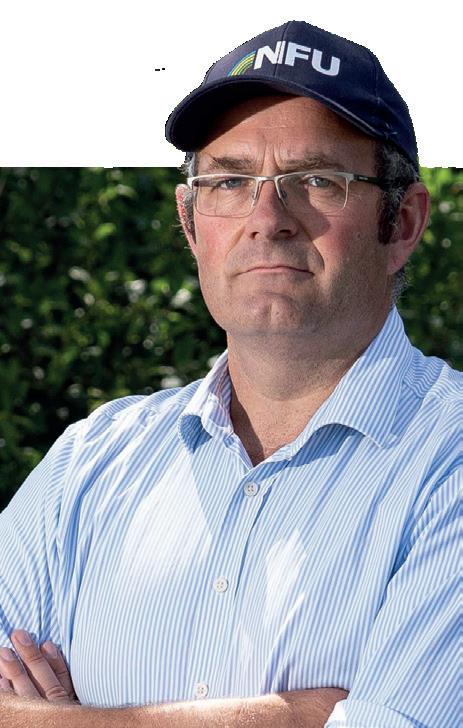
by the NFU.
NFU President Tom Bradshaw said: “Profitable farm businesses are essential if we are to deliver what the country needs; food produced to world leading standards and environmental protection.
Profitable farming is essential “
"We need government to deliver on its promises and prioritise domestic food production with a clear commitment to a budget that can underpin food production and deliver for the environment.”
The income slump follows a good year overall for average farm incomes in 2022/23. But the NFU said the figures were still low compared to other recent years – with cereal incomes down 49% down on 2016-19 and 66% on 2018-23.
Many farmers feel 'politically homeless'
Rural votes are up for grabs because people in the countryside have faced a generation of economic neglect, says the Country Land and Business Association.
Farmers and rural communities feel invisible and unseen by politicians, says the organisation. CLA president Victoria Vyvyan said: “Rural voters feel politically homeless and their support is up for grabs.
With a general election due this year, Ms
Vyvyan said there was still time for all political parties and candidates to grasp the key issues and help unleash the potential of the rural economy – and the CLA was ready to help their understanding.
“We will work with anyone whose ambitions match those of our dynamic and forward-thinking rural businesses. Whoever produces a robust and wide-ranging plan for growth in the rural economy will undoubtedly secure support.”
Boundary changes, shifting public opinion and a record number of incumbent MPs choosing to stand down mean this year will likely see hundreds of new MPs having to get to grips quickly with unfamiliar issues.
Parliamentary candidates from across the political divide will receive a pack of information explaining six key CLA topics – issues such as profitable and sustainable farming, affordable housing, rural crime and economic growth.
4 MIDLAND FARMER APRIL 2024 News
Farmers face a stark challenge, says NFU president Tom Bradshaw
March 2024, a dam good reason for land drainage. Up to the 14th March we have had over 60mm of rain in our local area. One of our clients sent us a video of his outfalls running at full bore but with no flooding in a field that used to be prone to it.
Below:
Field we drained 3 years ago, after 2 days of solid rain, no pooling. The outfall from that drainage running fast showing the drainage is working as it should.


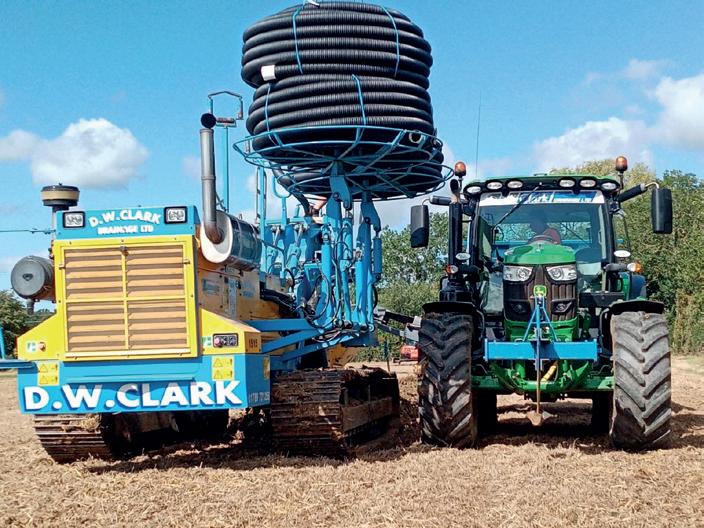

are only going to get worse, that coupled with the difficulties farming is facing day to day make you next investment drainage.
Increase in soil health, increase in yields, increase in profit. After all, as we were once told, “Got to be done as you can’t farm wet land”.
SO MUCH MORE THAN JUST DRAINAGE

UNIT 23 MEON VALE BUSINESS PARK, CAMPDEN ROAD, LOWER QUINTON, WARWICKSHIRE, CV37 8QR
01789 721258
TEL:
WWW.DWCLARK.LTD
Above:
Field with no drainage, water pooling and not going anywhere.
It does not always rain in the UK, he we are draining in last summer sunshine.
Lincolnshire couple create award-winning lamb brand
• Flock health at heart of success
• Taste of Excellence award winner
• Gelston Lamb keeps on growing
ALincolnshire couple who started with modest beginnings have built a sizable sheep flock and created an award-winning retail food brand.
Chris and Louise Elkington bought their first 30 sheep a decade ago. Today, they have a flock of breeding ewes and market every lamb reared through their Gelston Lamb brand, based at Chestnut Farm near Grantham.
The flock extends to some 500 ewes. Breeding is based largely on the Lleyn.
But also includes Roussin, Highlander and Aberfield genetics, with the Charollais also used as a terminal sire.
Lambing runs from the end of February through to the end of May, with 200 lambed indoors and 300 lambed outdoors. It’s an extended lambing period, says Chris, but helps the farm meet the demands of the retail market.
“We’re supplying our own fresh produce all year round, so with new lambs arriving over a three-month period we’re better able to manage the throughput,” he says.
“We’re aiming for a 19-20kg carcase, so nothing too big, in order to produce affordable cuts for our customers. Lambs from terminal sires will finish earlier and then slower growing lambs will run around and be finished as hoggets, so we try to always have some lambs at the right stage.”
The enterprise includes an on-farm butchery, online sales, a pop-up shop.
Mark Weatherhead Ltd
Telephone: 01954 210 355
Mobile: 07885 202 005
Hardwick, Cambs CB23 7QL

Demand for Gelston Lamb is growing and there’s a strong drive to maximise the number of lambs produced.
Lambing percentage
Increasing the flock’s scanning per centage form 170% to 180% been a stated aim during the farm’s period as an AHDB Strategic Farm (20192023). But minimising lamb losses is equally important.
“One big area of improvement has been to stop breeding from ewe lambs, as this was certainly dragging the scanning percentage down, and we’ve also increased the ratio of tups to ewes.
“Even during the dry summer of 2022, we’ve seen significant improve ments from these changes. We’re also tweaking the breeding, like increas ing our use of Highlander genetics, for example, to improve prolificacy.”
The indoor group is supplemented prior to lambing, with an 18% protein
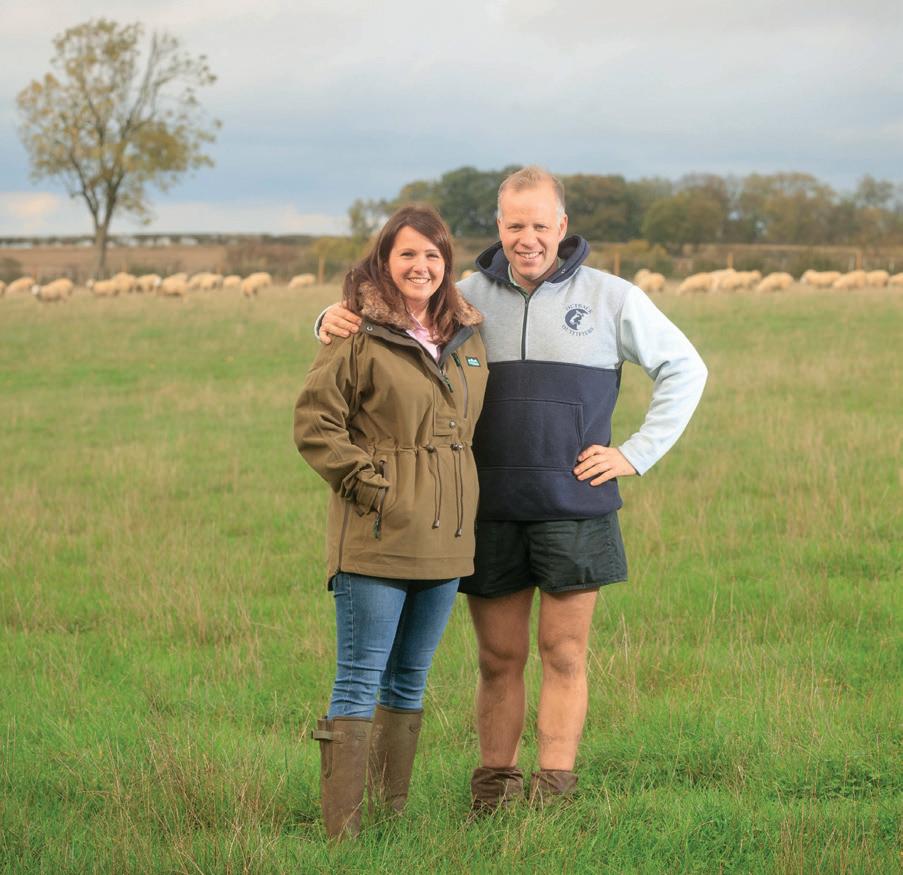






• Grain drying and storage • Groundworks and drainage • Electrical engineering works • Elevator/conveyor repairs
Steel Portal Framed Grain Drying and Storage Ground works and Drainage Electrical Engineering
Tel : www.markweatherhead.co.uk Existing building conversions 6 MIDLAND FARMER APRIL 2024 News
Royston
Sheep farmers
Chris and Louise Elkington have created an awardwinning lamb brand.

pellet being stepped up from about four weeks out. Outdoor lambers are not routinely supplemented, though may have sugar beet if needed.
Twin lamb disease isn’t a common problem. But when symptoms are spotted Nettex Multi Lamb Rapid provides a fast-acting energy source to help restore ewes to full health.
“We do have the occasional incident that occurs if there has been a tough lambing in rougher conditions. It’s good to have a rapid energy source on hand to get energy levels in ewes up quickly to help with recovery,” he says.
The indoor lambing routine is all about maintaining hygiene, so individual lambing pens and mothering pens are continually cleaned out, with powdered lime used between events to help keep infection at bay.
Navels are dipped with iodine, and the aim is to keep the ewes and lambs moving and have them outside as soon as possible, marked, tailed and the male lambs all castrated.
The outdoor lambing routine is more hands-off, with ewes checked every few hours but largely left to
lamb and mother-up by themselves. Losses are lower in the outdoor group with ewes in the right condition able to give plenty of good quality colostrum.
When ewes are lacking, Nettex Ultra Concentrate Colostrum is used if other options – such as wet adoption – are not possible. “Because it is full fat and easy to mix, it is ideal for when ewe colostrum is not available.”
Spring and summer grazing is largely made up of diverse herbal leys, including clovers, plantain, chicory, sainfoin and yarrow, in addition to ryegrass and other grass species.
From tupping time and into the winter months, the ewes are grazed on stubble turnips grown on arable ground away from the farm. It works well, bringing ewes through to lambing in the optimum condition.
Since September 2019, the Elkington’s have run their own butchery on the farm and now produce an array of lamb-based cuts and dishes available online. They won a Taste of Excellence Producer of the Year award in 2021 and now also have four products with Great Taste stars – including their lamb racks which gained the top award of three stars.





FARM DIARY
May
11 Nottinghamshire County Show, Newark www.nottinghamshirecounty show. com
15-16 Pig & Poultry Fair Birmingham NEC www.pigandpoultry.org.uk
18 Hadleigh Show, Hadleigh, Suffolk www.hadleighshow.co.uk
19 Essex Young Farmers’ Country Show, Roxwell, Chelmsford www.essexyoungfarmers.com
25 Shropshire County Show, Shrewsbury www.shropshirecounty show.com
29-30 Staffordshire County Show, Stafford www.staffscountyshowground. co.uk
To list your event for free, please email editor@ruralcity.co.uk

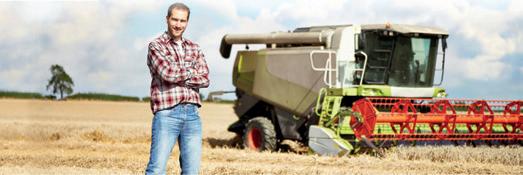
Customer service 0800 090 2376 LimeX is a business of British Sugar The UK’s No.1 Liming Product P2O5 - 9kg/t MgO - 8kg/t SO3 - 7kg/t www.limex.co.uk Save £££’s on fertiliser this year with LimeX Scan for quote APRIL 2024 • MIDLAND FARMER 7

Crop drying, ventilation and storage systems specialists.
Flach & Le-Roy Ltd is an industry leader in designing and delivering high performance drying, ventilation & storage systems.
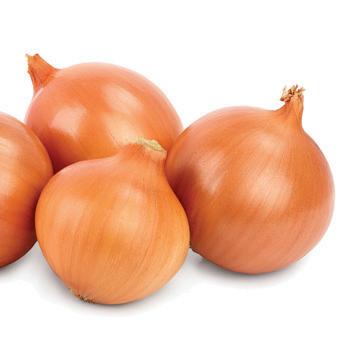
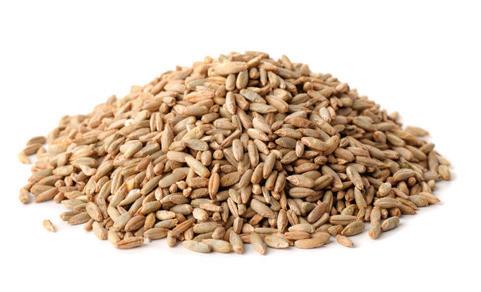
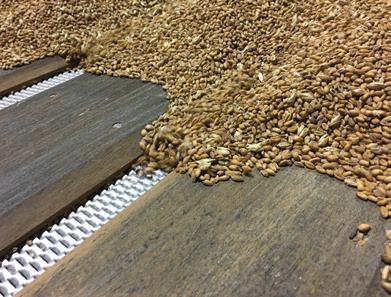
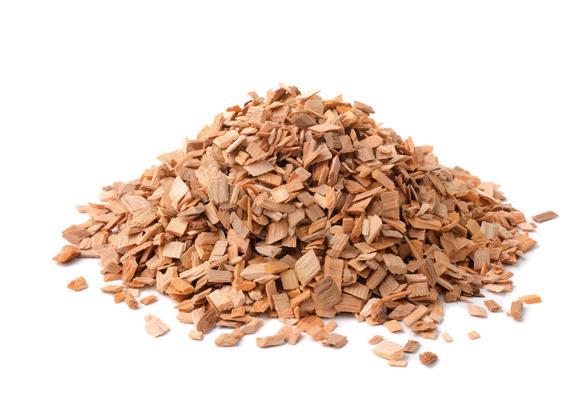
We have been supplying top quality drive-on and box store drying and storage installations to the arable farming industry globally for over 27 years and our business is continuing to grow.
Drive-on Floor Systems • Letter Box Duct Systems • Control Systems
Centrifugal & Axial-Flow Fans • Gas Burners • Walling Systems

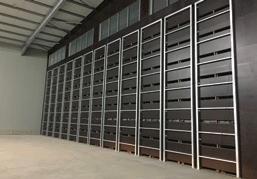

“Drive
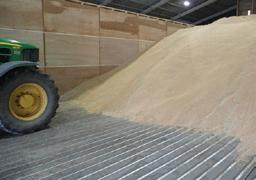
Telephone: 01480 495956
Mobile: 07774 141512
Email: enquiries@flruk.com
Website: www.flr-cropdrying.com
Guarantee Manufactured in England
& Le-Roy Ltd
10 year
Flach
experience in
industry
35 years
the
systems
on Dry off ”
KWS prepares to launch its first hybrid barley in UK
• Long history developing hybrid crops
•
•
Hybrid barley is a natural progression
Conventional programme continues
Plant breeder KWS is to launch its first ever hybrid barley into the UK market later this year – with a strong pipeline of varieties behind it.
The comapny said the move underlined its commitment to the sector in the coming years. Although a newcomer to hybridisation in barley, KWS has years of experience of hybrids across sugar beet, maize, rye and oilseed rape.
“Our history with hybrid breeding stretches back to 1960s with maize and we have been steadily and successfully adding new hybrid crops and varieties to our portfolio since then,” says KWS UK hybrid crop product manager Kate Cobbold.
Barley is one of the world’s most important cereals crops and KWS has a track record of successful varieties.
“We are the market leader in conventional barley in the UK and France, for example, and introducing hybrid barley now adds to that position by allowing us to offer another solution to offer growers.”
Customer options
But the new range of hybrid barleys being launched under #NextLevel, does not replace the company’s highly successful conventional varieties, such as the current UK market leader KWS Tardis, she emphasises.
“There is a place for both conventional and hybrid barley varieties on farm. Depending on the end market and local growing conditions, farmers now have options for finding the most appropriate barley solution and that is the benefit of the KWS position.
“At the moment, 450,000ha of winter barley is grown in the UK each year of which roughly 25% is hybrid barley so we see huge opportunities in the future with the crop bringing many benefits to growers.
“Firstly, there is the potential for higher and more stable yields. Farmers are increasingly under pressure in terms of increasing production costs and volatile grain markets and a good way to mitigate against these pressures is to have varieties that deliver high yields consistently.
“Increased productivity also helps with sustainability as more efficient use of land and resources is made.”
Growers are also looking for varieties with robust disease resistances and good grain quality and hybrid varieties can excel in this area, too, she points out.
“As farmers increasingly battle with blackgrass, hybrid barley can help reduce grassweed pressures. Hybrid barley has a bigger root system than conventional barley and it gets going very early in the spring which allows it to better compete with grassweeds.
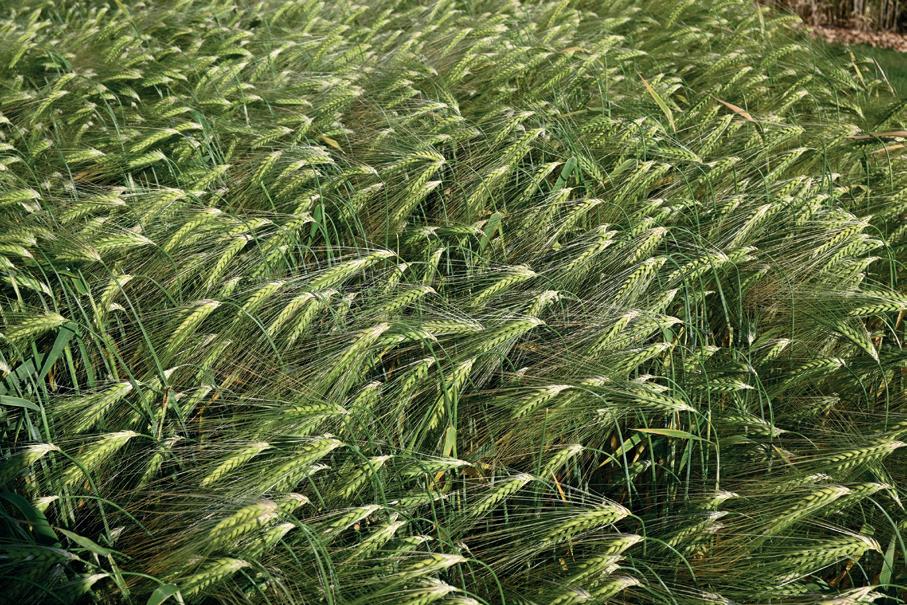
“Although this doesn’t offer complete control, it is a useful instrument within the grower’s tool box in the long-term battle with blackgrass pressures.”
Hybrid barley is also a great addition to crop rotations, usually being the first cereal to start harvest, adds Ms Cobbold.
“Thanks to its early harvest maturity, hybrid barley is an ideal crop to sow before oilseed rape, giving farmers the opportunity to drill earlier and spread the workload during a very busy time of the year.”
Exciting future
The variety Inys is the first of the new hybrid barley varieties to be launched.
“Inys seems to have a definite yield advantage over the leading hybrids currently available in the UK with good yield stability plus we’re see ing thicker plant stands and deep er rooting, which is exactly what we were hoping to see.
Kate Cobold: Another solution to offer growers
“There are indications that Inys also has a much more vigorous growing habit in the early stages of development with up to 40% greater ground cover in some instances.
“It’s all shaping up to be a very exciting project with significant benefits for growers in the future.”
Global markets
Sandra Dunckel, KWS head of breeding barley, says the UK will be the first of the company’s global markets to introduce hybrid barley.

“Many people have put in a lot of hard work to get us to this point, with the hybrid barley breeding programme taking us all across Europe and strengthening the bonds between the different barley breeding teams within KWS stations.
“Furthermore, we have initiated ongoing trials across multiple countries with the first KWS hybrids entering official trials in autumn 2022, which represents a major exciting milestone.”
Arable
Inys is the first of the new KWS hybrid barleys
APRIL 2024 • MIDLAND FARMER 9
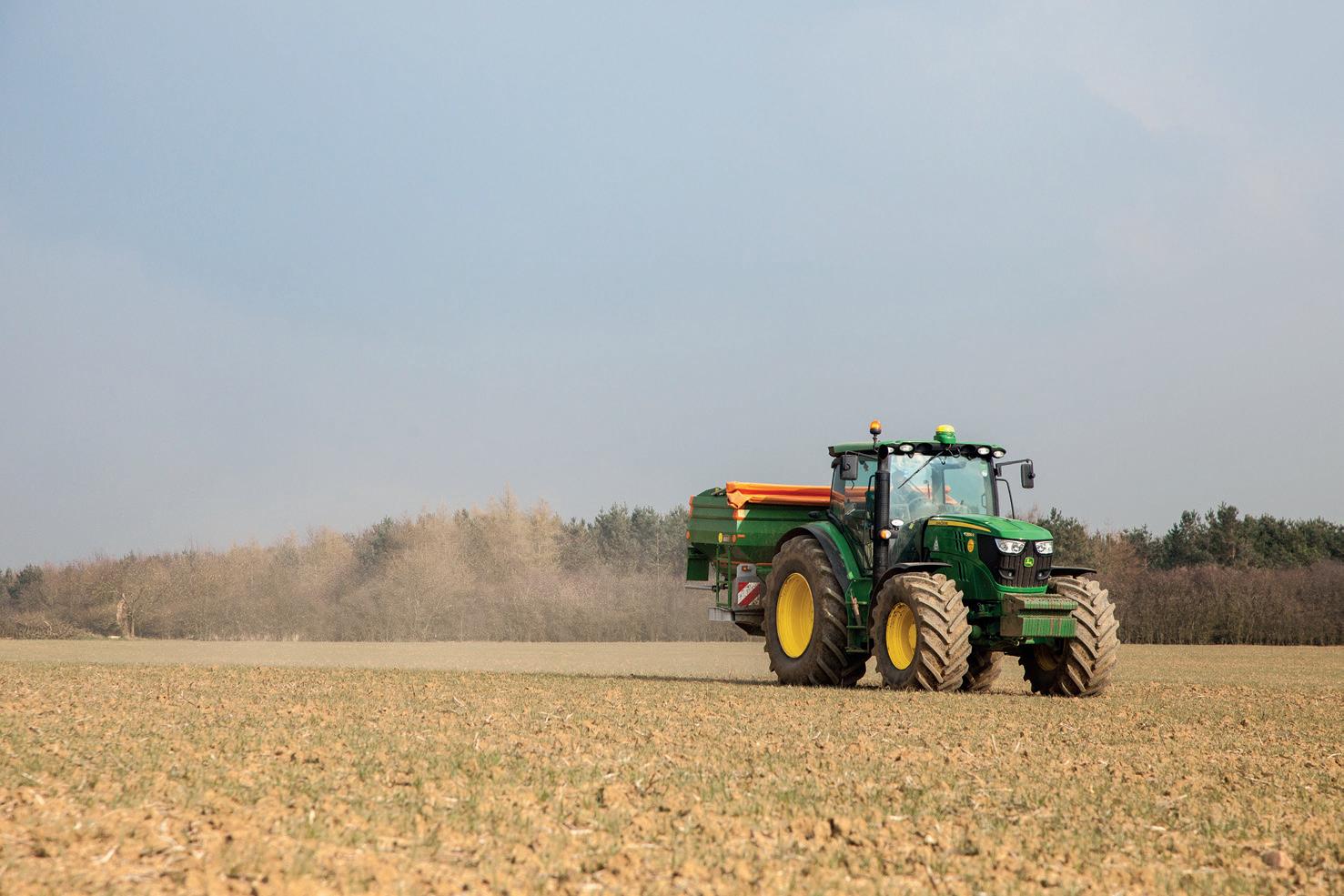
Variable nitrogen could prove its worth this spring
Uneven growth in many cereal crops
Variable-rate nitrogen applications could be a valuable tool for managing uneven growth of winter cereals and oilseeds this spring.
Some crops sown before the weather broke last October established well and show good potential. But others have struggled where seedbeds were compromised or land suffered prolonged waterlogging or flooding.
“There’s huge variation out there and some pretty sensitive crops need managing carefully,” says Omnia digital farming manager Aidan Monaghan. “Variable nitrogen applications to even up growth and optimise yield potential has a stronger role in a year like this.
“All winter crops can show a response from variably applying nitrogen, but the biggest benefits are when there is more variation. This year is almost the perfect opportunity for variable nitrogen, even if you’re already using variable rates elsewhere, such as for seed.”
Baseline
When planning nutrition strategies, Mr Monaghan recommends first establishing a baseline for each field and crop. Omnia users are able to do this by accessing NDVI satellite imagery for any fields saved on the system.
The system generates a regular supply of images throughout the year when the skies are clear. They provide a useful starting point to show in-field variation before anything starts grow ing, says Mr Monaghan.
Early mapping can highlight are as where crops are damaged beyond repair and are better being re-sown, rather than receiving further inputs. Soil Mineral Nitrogen (SMN) testing and later tissue, sap or in-field chlo rophyl can also help build a picture.
There are different approaches to
variable nitrogen, depending on the requirements of individual crops and field situations.
The traditional approach in winter wheat is often to variably apply the first couple of doses, upping rates on thinner areas of crop to build biomass, while cutting rates on thicker parts, to generate more even canopies.
Most fields will benefit from a good early nitrogen dose to get crops moving because residual nitrogen levels this spring are likely to be lower than normal after the wet winter, says Mr Monaghan. This will have increased leaching losses.
“The best approach might therefore be to apply a flat rate first, then vary the second application to even crops up, before tailoring the final nitrogen applications to the yield potential of specific areas of crop.”
Many trials over multiple years show a clear benefit from front-loading nitrogen at the start of the season to build biomass and support tiller retention during the crucial foundation phase.
This then allows subsequent doses to be varied according to yield potential and end user requirements. But it isn’t just soil nitrogen that could be much lower this spring, says Hutchinsons fertiliser and crop nutrition spe-
There’s huge variation out there
This year is a good opportunity for variable nitrogen, says Aidan Monaghan Well-balanced nutrients will optimise yields, says Rob Jewers

tassium and sulphur compound fertiliser to give crops a bit of an all-round nutritional boost.”
Mr Jewers points out that NDVI imagery could be useful this spring for highlighting any areas of crop have that have failed to establish completely, or have been lost to flooding, before fertiliser is applied.
Fields should be walked to double-check whether there is any viable crop remaining, and if not, application plans can be set so that no fertiliser is applied to bare areas.
Technology
But saving fertiliser is not the main aim of variable rate applications, he notes. “It’s about using the technology to even-up crop growth through the season, tailoring inputs precisely to crop requirements to optimise yield potential.”
This can bring other management benefits, such as reduced lodging or more even harvesting, and help growers improve overall nitrogen use efficiency (NUE).
“Typically, NUE is around 5560%, but a good target is 75-80%; any more than that and there is a risk that you’re starting to ‘mine’ the soil’s reserves. Omnia is a really good tool for helping you calculate the NUE for individual fields.”
Variable fertiliser applications may be slightly different in oilseed rape, as crops often receive just two main applications, says Mr Monaghan. Crops can be evened up by variably applying the first dose, then adjusting the second according to expected yield.
Set-up
“The key is to establish that early baseline, then keep reviewing crops and their yield potential as the season progresses, using the NDVI imagery in Omnia, and any other information, to plan the most appropriate strategy.”
10 MIDLAND FARMER APRIL 2024
“ Arable
I’VE GOT THE POWER

to save time with a single application







Push the button for more efficient weed control in sugar beet.
www.kws.com


With only one application you need less time to manage weeds in your sugar beet and have more time for other crops. Get the power with CONVISO ® SMART sugar beet seeds from KWS and CONVISO ® ONE herbicide from Bayer.

CONVISO® is a registered trademark of Bayer.
More growers choose sunflowers this spring
United Oilseeds has launched the first buying pool for UK sunflower seeds – worth £350450/tonne for a crop that yields about 1-2t/ha.
The crop can be drilled from about 10 April onwards depending on frost and wet conditions but a consistent soil temperature of 7°C is the main driver for the drilling window.
Tight supplies of spring cereal seed are expected to see more farmers grow sunflowers this year. Plant breeder Grainseed is reporting significant interest in its best-selling early maturing variety Es Bella.
Consistent performer
Bella has performed consistently well in UK trials and commercially in England. It has a high oil content of 4850%, good standing ability, reducing neck snapping, high dry matter yield and good disease resistance.
Sunflowers can be successfully

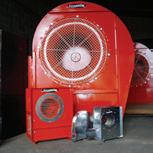

grown south of a line from the Wash to the Bristol Channel – but climate change and increasing temperatures means this area is expanding northwards.
Grainseed sunflower specialist Edward Stanford says: “I can see sunflowers really flourishing in the UK within 5 years – and early adopters can try out this great alternative spring crop in 2024.”
A low-input crop, seed is the most expensive input. Sunflowers are sown at 110,000 seeds/ha or 120,000 seeds/ ha on heavier clay soils to achieve a target population of 100,000 plants/ha on a 25-45cm row width.

Sunflowers are a good spring break crop, says Ed Stanford
Seed is treated with a fungicide to protect from damping off and seedling blight. To prevent disease, sunflowers should not be grown more often than one year in four. Growers should not follow sunflowers with potatoes.
Drilling in April means weeds such as blackgrass can be controlled by a
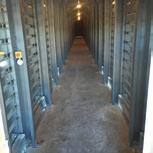



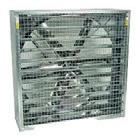

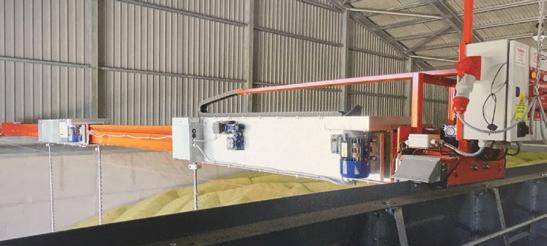

stale seedbed and glyphosate. Preemergent herbicide can be used for early weed control with a dense crop canopy preventing problems later in the season.
Pigeons can be problematic for the first 10 days post-drilling. Slugs at seedling stage can also be a risk. But once the crop has two cotyledons, it rarely needs further protection against these pests. Fertiliser needs are low and often zero.
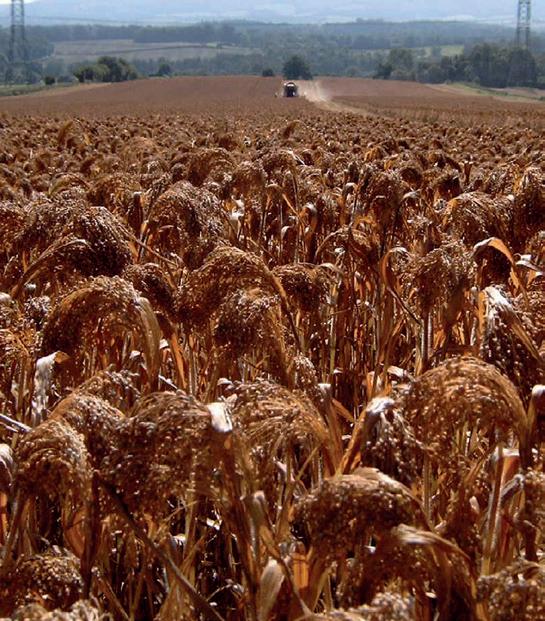



PELLCROFT www.pellcroft.com sales@pellcroft.com 01526 342466 Manufacturers of centrifugal, low volume and portable fans, air tunnels, drive over floors, grain stirrers and gas burners. Mammoth Millet Due to the war in Ukraine, Millet values have increased rapidly in recent months and we are seeing higher prices at £340-£370/tonne. This has transformed the gross margins and for harvest 2024, we are now projecting a gross margin of over £1000/Ha. Soya UK Ltd SoyaUK Longways House, Burnetts Lane, West End, Southampton, Hampshire SO30 2HH www.soya-uk.com T: 02380 696922 email: enquiries@soya-uk.com Hectare Acre The Best Gross Margin? Mammoth is a cheap, simple and easy crop to grow, sown in early May and harvested 135 days later in midSeptember. New growers required for 2024. Yield (tonnes) Value (£/t) Total Income Seed Cost (£) Fertiliser Cost Spray Cost (£) Total Cost (£) Gross Margin (£) 1.42 350 497 45 24 20 89 408 3.5 350 1225 111 60 50 221 1004 @SoyaUKLtd 12 MIDLAND FARMER APRIL 2024 Arable







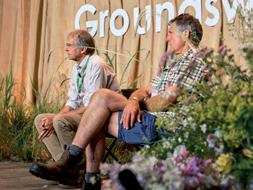


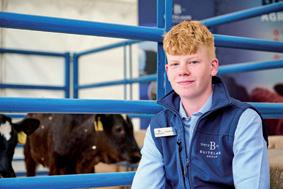








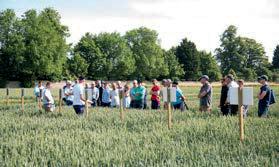




















THE REGENERATIVE AGRICULTURE FESTIVAL Lannock Manor Farm, Hertfordshire 26th - 27th June 2024 Tickets go on Sale 22nd April at 10am GROUNDSWELLAG.COM “BY FARMERS, FOR FARMERS” 200+ Speakers, Seminars, Workshops, Safaris, Exhibitors, Demo’s, Live Music and Bars open late with Camping over three nights SWELLAG.COM over June 19th 2024 9am - 5pm Weston Under Lizard, Shifnal, TF11 8QA NRoSO + BASIS Points available Main sponsors thearableevent.co.uk Trial Plot Tours Moisture Meter Clinic Working Demonstrations Trade Stands Guest Speakers A leading event for Arable Farmers Register for a FREE TICKET today at www.thearableevent.co.uk Working Demonstrations by Battlefield Machinery Edwards & Farmer RVT Morris Corfield TR Machinery Fast track ticket prize draw sponsored by Mornflake Chances of winning one of these fantastic prizes Charlie Ireland Olly Blogs Guest Speakers APRIL 2024 • MIDLAND FARMER 13
How satellite imagery could revolutionise pea harvest
Satellite imagery is helping scientists develop a new method to help growers predict vining pea yields.
The PeaSat project involves ADAS researchers and pea grower coopera-

Remote sensing specialists at ADAS believe they can use satellite data taken at flowering to accurately predict final pea yield. It is hoped the resulting algorithm will be ready for use by growers before the 2024 vining pea harvest.
ADAS remote sensing consultant Ben Hockridge says: “By creating an algorithm using satellite imagery, we can provide real-time, up-to-date information for everyone involved, no matter where they are in the process.”
HMC Peas have had yield mapping viners since 2017. They are sharing their repository of past yield map data for multiple vining pea varieties. This data will be used to calibrate the algorithm and ensure accuracy in time for harvest 2024.
Grower groups and processors who are supporting the project say accurately predicting yields from individual fields could revolutionise the way we vining peas are harvested – with benefits for farmers, consumers and
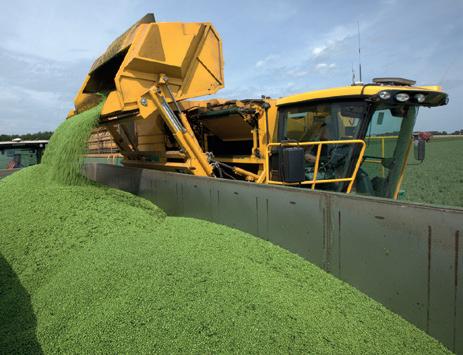
Accurately predicting yields could revolutionise harvesting
Left: Ben Hockridge: Realtime information
the environment.
Pea processing company Greenyard predicting the yield that is coming out of a field would ensure that crops were taken at the required tenderometer reading (TR) band, reducing waste to a minimum and improving the production process.
HMC general manager Allen Giles says: “The efficiencies that this will bring will not only increase our productivity but will also potentially reduce our environmental impact significantly.”
ADVERTISER’S ANNOUNCEMENT
LEADING THROUGH INNOVATION SINCE 2004 – CELEBRATING 20 YEARS OF LODI UK SUPPORTING BRITISH PEST CONTROL
HISTORY OF LODI UK
Established in 2004, our story began supplying 5 professional pest control products from our hub in the West Midlands, a place we still call home today. Lodi UK is a subsidiary of the Lodi Group who are one of Europe’s largest family-owned manufacturers of pest control chemicals. Individual and authentic, what you see is what you get. Over the years Lodi UK has invested in both people and products, growing to be one of the UK’s leading suppliers into the professional, agricultural and retail sectors. Your one stop shop for pest control solutions.
LEADING THROUGH INNOVATION
Here at Lodi UK, we strive to launch new, innovative active ingredients and formulations to ensure that our customers have the best possible armoury in controlling pests. We offer an extensive range of products targeted at insect and rodent control, stored grain protection, garden and ground care and amenities. Our products are used by all bluechip companies involved in pest control as well as professionals in the agricultural industry.
CHEERS TO 20 YEARS
As a business we are focused on offering first class service, on-hand technical advice and unrivalled marketing support. With 20 years’ experience supplying the professional pest control industry, Lodi UK has a unique perspective on what works and how to make it market leading, delivering products that you know you can trust. Building on a history of quality and service we always endeavour to support and inspire our partners, customers and end-users.
THINK BIG, THINK LODI
Every year we look to do more and achieve more, leading the way in sustainable pest control solutions. Forming part of our ongoing sustainability mission, Lodi UK are committed to reducing our plastic consumption by over 57% with the introduction of recycled buckets and baiting made better – better for us, better for you and better for the planet. The future is bright, the future is Lodi. Our company promise is simple, we aim to be your pest control partner of choice.
“20 years, How quickly time flies.. it has been a real pleasure seeing how the Lodi business and team have developed over the years –many of our team as well as many of our customers have been with us since the early years. We pride ourselves on delivering quality products coupled with a reliable and good service. Lodi wouldn’t be where it is now without the quality of product, passion and people, our team and very importantly the loyalty of our customers – thank you for all your support over the years and cheers to many more to come.”
Roger Simpson, Lodi UK
Director

WWW.LODI-UK.COM 14 MIDLAND FARMER APRIL 2024 Arable


Large
Claas, Vaderstadt, Simba and many more.
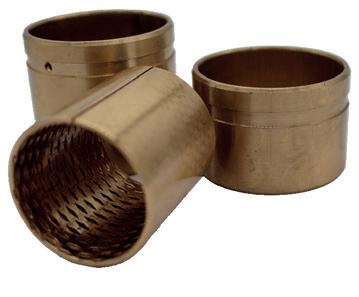


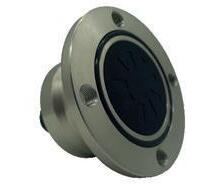
AELS, Unit 8 Ebor Court, Randall Park Way, Retford DN22 7WF 01777 860224 sales@aeliquidsolutions.co.uk
OF AGRICULTURAL PARTS ACROSS THE MIDLANDS OFFERING UNBEATABLE QUALITY SERVICE
AVAILABILITY KNOWLEDGE
SUPPLIER
PRICING
APRIL 2024 • MIDLAND FARMER 15
array of stock covering over 100,000 different parts in power transmission and agricultural & plant requirements. Our extensive range includes: JCB, Case,
High yielding soft wheat signals landmark change
• New variety has very strong CV
• Promise of high yields for growers
• Popular with the trade for export
Growers and agronomists should find it easier to decide on which winter wheat to grow follow ing a cleaner, fresher look for the lat est Recommended List.
With a much-improved layout, the list sees 10 wheat varieties removed and just five new varieties recom mended for the 2024-25 season. Rec
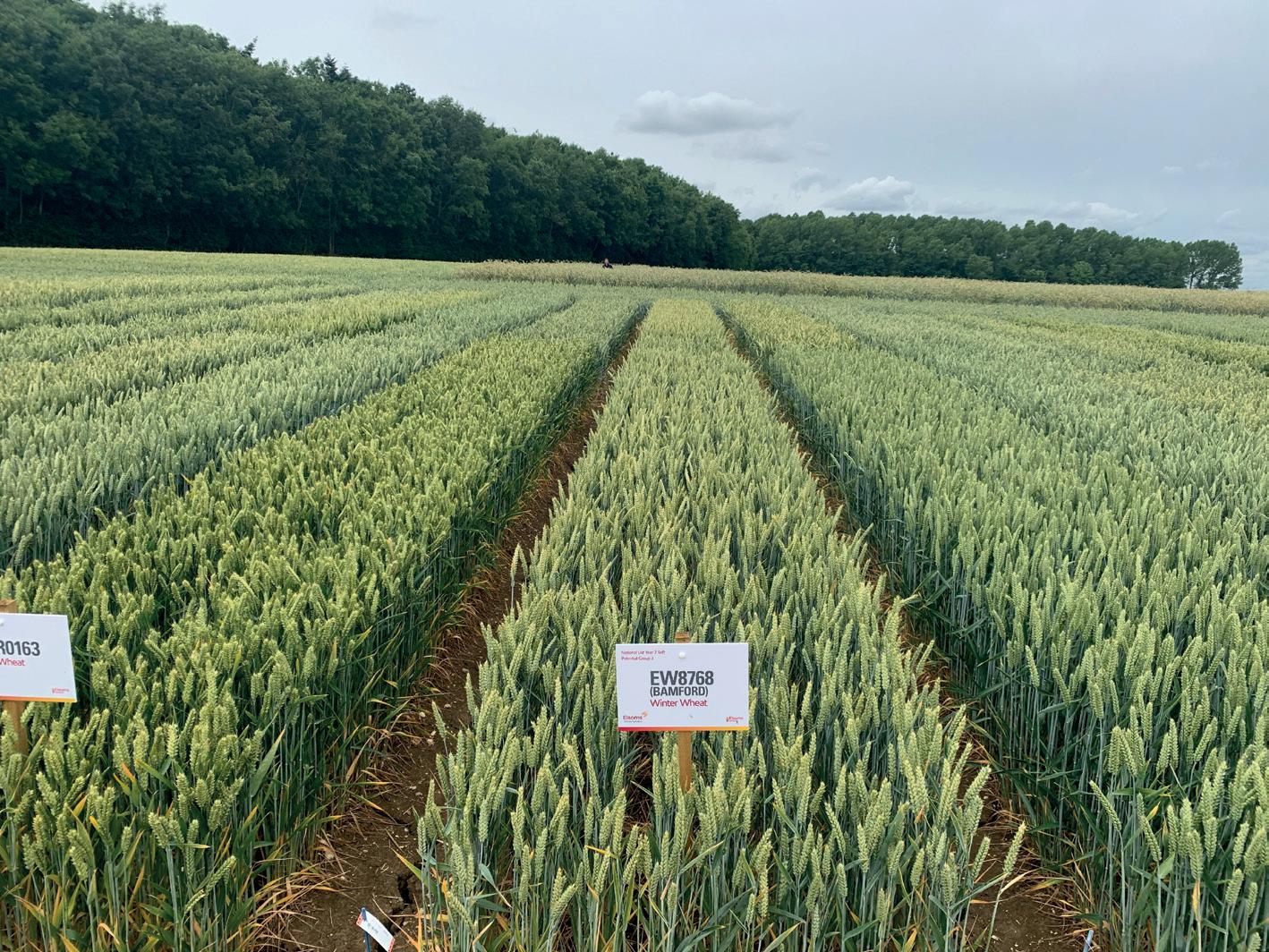
strong line-up of new winter wheats this year, the overall stand-out based on its yield, wide marketability, high specific weight and impressively consistent disease resistance ratings has to be Bamford.
“With a treated yield of 106%, it’s 6% ahead of the next best Group 3 soft, and with an untreated yield of 92%, it has the second highest untreated yield on the entire winter wheat RL – regardless of classification”.

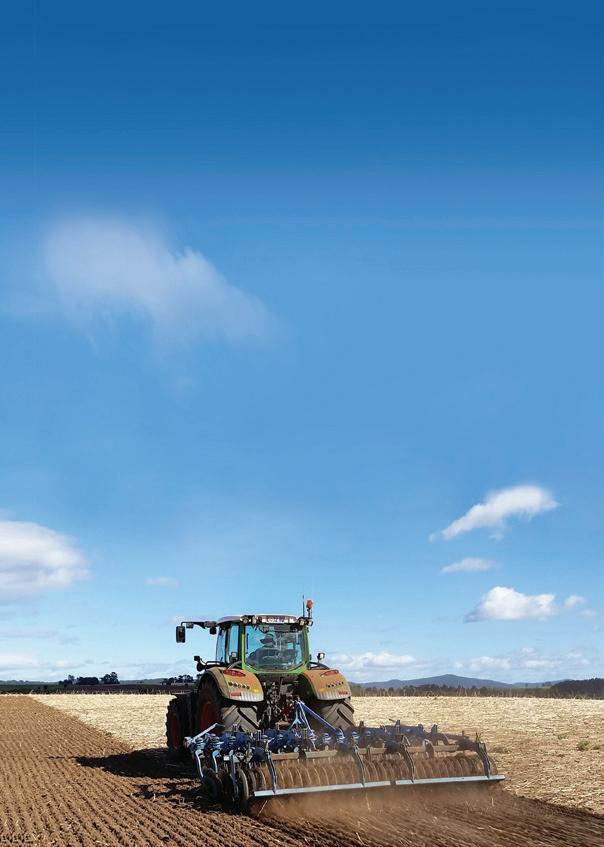
The new soft wheat, from independent breeder Elsoms Seeds, first caught Mike’s attention in NL1 trials following a tip-off from Procam colleague, Seed Manager Lee Harker.
Clean variety
“I recall Bamford’s specific weight being over 78kg/hl in that first trial when most other wheats struggled to get close to that type of figure.
The untreated Bamford plot looked incredibly clean and, with growers often looking for opportunities to lower agrichemical inputs, its 92% untreated score is a compelling figure on any variety’s CV.
“It’s undoubtedly the best Group 3 to come onto the RL in many years, but I believe growers should consider

it, first and foremost, as a very high yielding wheat – not simply as a Group 3 biscuit wheat.
“Although there’s very little to separate Bamford and LG Beowulf on this year’s list, Bamford’s earlier maturity may well give it an agronomic edge with growers in the North” suggests Mike.

Call us on 01284 747292 or email admin@4xtrahands.com Farm Recruitment Looking for a job? 4Xtrahands.com info@webstersinsulation.com www.webstersinsulation.com FOR A FREE QUOTE CALL: 01405 812682 Sprayed Foam Insulation Specialists Polyurethane sprayed foam insulation leaders Crop stores, workshops, barns. Frost damage protection, insulation upgrades, condensation. Crow Tree Farm, Crow Tree Bank, Thorne Levels, Doncaster, S. Yorkshire, DN8 5TF 16 MIDLAND FARMER APRIL 2024 Arable
>>
Bamford’s 92% untreated yield score is compelling, says Mike Thornton (left)


PREPARATION PROTECTS PROFIT
BE GRAIN STORE READY POST-HARVEST
After months of work to produce the best possible harvest, the aim is to reap the rewards by selling grain at the highest price. Prioritising grain store preparations can protect precious profit, ensuring stores are free from the potential risk of insect pests and harvests are less vulnerable to infestations.
Effective grain store preparation is often the missing piece of the growing season jigsaw, says Ken Black, Account Manager at Envu Environmental Science.
“It isn’t a popular job on the farm. It’s time consuming and comes at a time which is incredibly busy, but that doesn’t mean it can be overlooked. A proactive approach is needed to ensure that all the work that goes into growing and harvesting grain doesn’t go to waste.” It only takes one insect to be found in a one-kilogram sample of grain for it to be rejected. With end-users becoming increasingly selective when it comes to buying or rejecting grain, it’s vital for farmers to take a proactive approach, with effective preparations to deter grain store pests.

MONITOR STORES AND PROMPTLY TREAT PEST ACTIVITY
Insect monitoring traps, which are sticky boards that can be put in every few metres, can help identify insect activity. “If you haven’t seen any activity after monitoring you may not need to apply any insecticide. But where there is evidence, you might consider something like Envu’s K-Obiol™. This should be applied up to two months ahead of harvest. Its residual effect allows you to control any adult insects that come into contact with it,” concludes Ken.
K-Obiol™ is available in two formulations, both providing preventative and curative protection against stored grain insects. K-Obiol™ EC25 has been formulated to treat the fabric of grain silos and storage facilities prior to the introduction of grain. This fabric treatment provides up to 2 months protection and is accepted for use by the Brewing Research International (BRI), the National Association of British and Irish Millers (NABIM) and the Trade Assurance Scheme for Combinable Crops (TASCC).

HOW TO PROTECT YOUR GRAIN STORE
To minimise the risk of infestations, grain stores should be cleaned and prepared 6-8 weeks before harvest.
Thorough preparation and hygiene helps to eliminate sources of contamination from fungi, insects and mites, that are most likely to be introduced from the store structure and equipment. Even small quantities of residual grain provide a food source, allowing pest problems to build.
Ken says: “The earlier you can prepare a store by thoroughly cleaning it out and monitoring for insect activity - the better. Thoroughly clean ledges and dispose of any old dust and debris as quickly as possible, well away from the store. Don’t leave vacuums within the store as the pests can easily crawl out.”

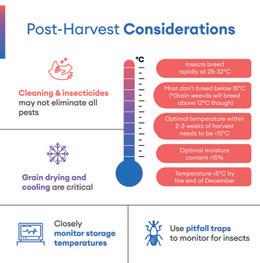

To find out more about how K-Obiol™ can protect your harvest visit www.lodi-uk.com or contact the Pest Solutions Team on sales@lodi-uk.com or 01384 404242

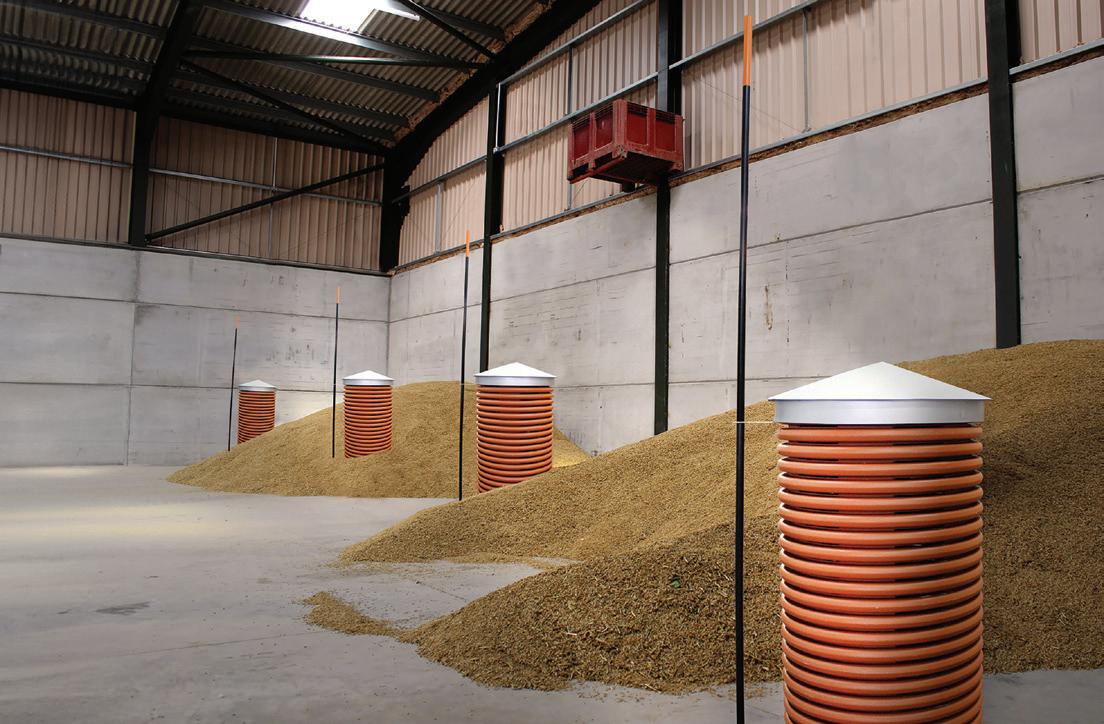
35+ years manufacturing grain cooling fans
Sturdy and robust poly pedestals
Vented Twist-2-lock base improves stability
Unmatched airflow power through the grain
Removes hot and moist air from the grain store, directly outside!
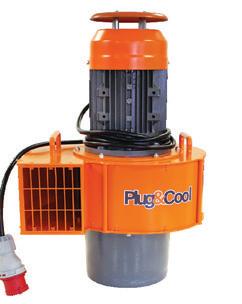
01621 868 138 www.plugandcool.co.uk sales@plugandcool.co.uk
COOLING
Outdoor UNDERFLOOR
ME
SCAN
NEW PROTECTIVE RAIN CANOPY 18 MIDLAND FARMER APRIL 2024
Arable
For growers based in the South, Bamford’s higher yield when compared to almost all other winter wheats would be its greatest attraction says Christian Maltby, Seed Manager with Bartholomews.
“Growing high-yielding Group 4 feed wheat in the South-East is often less favourable due to a lack of local feed homes and export interest. Assuming growers can grow Bamford to a minimum 11% protein, it looks good.
Export market
Allied to its robust Hagberg and specific weight data, high quality UK soft Group 3’s like Bamford are highly marketable for export, due to a lack of Group 3 wheat being grown in other countries for the Iberian market.
“With increasing costs of fertiliser, and the higher risk involved in pushing some varieties to achieve 13%
variety performs on a larger scale and expect to see strong seed demand this autumn. Our longer-term expectation is that subsequent high-yielding Bamford wheat crops, grown to a specific minimum grain quality will increase the market share of planted Group 3’s in the UK.”
Jim Knightbraid, seed business de velopment manager for Frontier Agri culture, agrees with Christian’s view on the potential for future growth in the Group 3 planted area.
“After a period of stagnation in Group 3 biscuit making varieties, Frontier were on the lookout for a new variety to rejuvenate the sector and bridge the yield gap between hard and soft wheat varieties.
“Bamford has always looked a good clean crop in Frontier trials and was the highest yielding variety in our harvest 2023 untreated trials across five Frontier replicated trials sites.”

Those positive trial results, along with Bamford’s flexibility to be grown suc cessfully across different geographies and within different farming systems, made our eventual decision to place significant seed crops of Bamford for autumn 2024 availability a relatively
“We think Bamford looks well equipped for earlier drilling dates, which will appeal to growers follow ing some serious crop establishment challenges in 2023. It’s straw strength and moderate speed of development in the autumn make it well suited to ear lier drilling, particularly in the north of England and Scotland where Sep tember drilling dates are preferred.
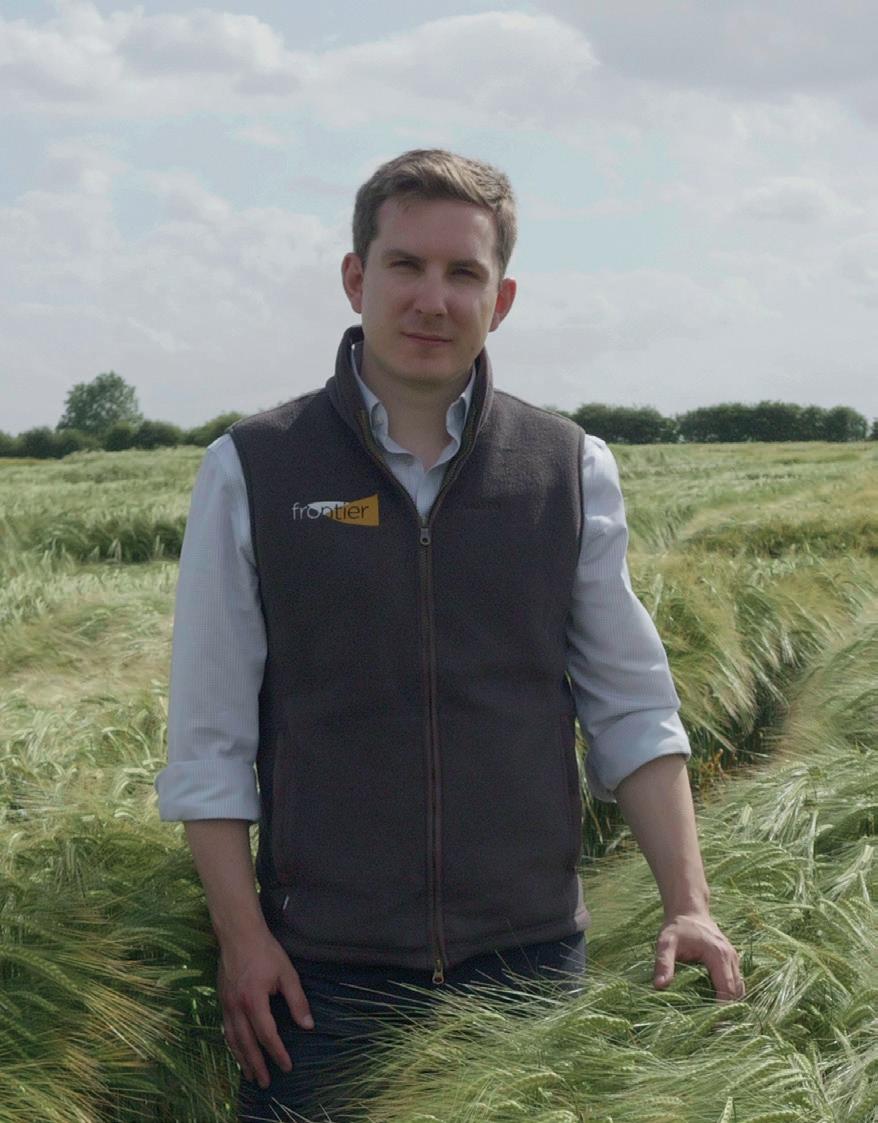
Bamford also offers a fast speed of development in the spring and has an erect growth habit. Two agronomic characteristics that will help it to outcompete higher grassweed burdens – a key problem for UK wheat growers
recent years that couldn’t quite combine high yield with high bushel weight. Bamford’s specific weight of 78.5kg/hl represents a real step up in this area, given that it is higher than any of the currently recommended Group 3 and soft Group 4 varieties.”

Tel:01455891929 DBusinessCentre/SapcoteRd,Burbage,Hinckley LE102AU www.multiindustrialdoors.co.uk sales@multiindustrialdoors.co.uk •Fast Acting High Speed Doors •Dock Leveller/Loading Bay Installations •and many more products INDUSTRIAL DOOR Specialists Manufacture • Service • Installation
>> APRIL 2024 • MIDLAND FARMER 19








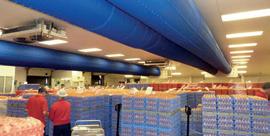

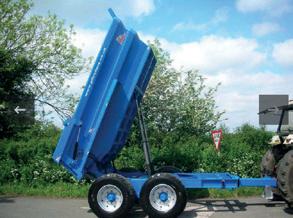
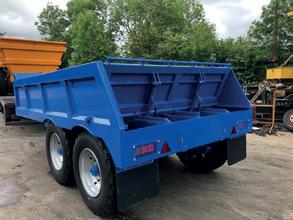

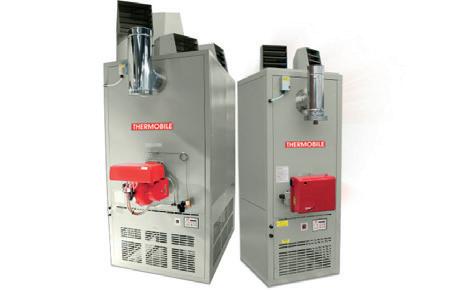



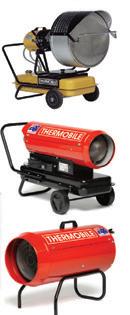
• Store hygiene • Post harvest treatment of stored crop Potato and crop storage treatments protecting your profits since 1971 Unit 4, Five Mile Business Park, Washinborough, Lincoln LN4 1BF Tel: 01522 797222 Email: info@storedcrop.co.uk www.storedcrop.co.uk Over 60 years serving the agricultural industry with energy efficient crop cooling solutions. Including supply, installation, maintenance and repair of all types of refrigeration. T: 0114 553 7789 E: agriculture@bradleyref.com www.bradley-refrigeration.com Offering a range of agricultural and commercial trailers for sale, including: • Low Loaders • Dump Trailers • Multi Purpose Trailers • Pallet/Bale Trailers • Dropside Tipping Trailers • Half Pipe Tipping Trailers • Hydraulic Beavertrail Trailers • Fuel Bowsers To discuss your next trailer, contact us today & 028 8776 7410 ) info@pftrailers.co.uk www.pftrailers.co.uk 8 • Bio oil fired heaters • Oil and gas fired cabinet heaters • Suspended oil and gas fired unit heaters • Portable and mobile heaters • Electric heaters MAIN OFFICE: 02476 357960 SALES CONTACTS: Andy Wallis 07850 988382 andy@thermobile.co.uk | John Hall 07775 635527 john@thermobile.co.uk WEB: www.thermobile.co.uk
20 MIDLAND FARMER APRIL 2024
12 Buckingham Close, Bermuda Ind Est, Nuneaton, Warks CV10 7JT
Root crops
Sugar beet growers face high-pressure virus year
• Aphids fly into emerging crops
• More susceptible growth stage
• Agile spraying strategy needed
Sugar beet growers face anoth er high-pressure year for virus yellows with aphids flying into new crops as they emerge.
Aphids will be flying two to three weeks earlier in England compared to the historical aver age, according to the Rothamst ed Insect Survey aphid forecast for 2024, which was issued on 1 March.
First capture of peach–potato aphid at the Broom’s Barn research station in Suffolk is predicted for 10 April which is much earlier than pre viously forecast. This suggests a virus epidemic on the scale of 2020.
Significant risk

The British Beet Research Organisation (BBRO) expects some 40% of the crop to be drilled with untreated seed and with aphids arriving when crops are at younger, more susceptible growth stages, this poses a significant risk.
In the absence of any control measures, the BBRO forecasts an 83% incidence of virus yellows for 2024. This breaches the DEFRA threshold of 65% required to trigger the use of Cruiser SB (thiamethoxam) on seed.
Patience has been key for crop establishment this spring. With wet weather and sodden soils holding back drilling, the BBRO has been advising growers to wait for warmth before getting the crop in the ground.
Waiting for warmer conditions –and for soil temperatures to rise from 5°C to 8°C – would have a big effect on germination and prepare the way for rapidly and evenly established crops. These often perform better and suffer less virus content.
Careful monitoring
Even so, crops drilled with untreated seed will still need careful monitoring for aphids from early April on-

for the first spray should take into consideration aphid abundance and crop growth stage.
Emerging
Above right: Aphids will be flying into crops a fortnight earlier than usual
The two available foliar insecticides – acetamiprid and flonicamid – are subtly different. InSyst (acetamiprid) is a knockdown product with faster activity than Teppeki or Afinto, which are both based on flonicamid.
Crops drilled with Cruiser SB seed treatment should be protected for up
to 10 weeks from drilling, so depending on aphid numbers in June, they may require further protection from a foliar insecticide then.
Consecutive applications of neonicotinoid products are not permitted, so the Emergency Authorisation for Cruiser SB specifies that if subsequent foliar sprays are required, the first one must be a flonicamid containing product.
If aphid thresholds are breached again this can be followed by InSyst.
Tributes to sugar beet expert Simon Bowen
Industry leaders and growers have paid trib ute to sugar beet expert Simon Bowen, who died unexpectedly last month.
Mr Bowen, 62, was head of knowledge ex change at the British Beet Research Organi sation. He passed away following a suspected heart attack while walking his dog on 10 March.
In a statement, the BBRO described Mr Bow en as an outstanding ambassador for the sugar beet industry, widely respected for his exten sive sugar beet knowledge and his enthusiasm for the crop.
“He will be greatly missed,” said the BBRO. “Our thoughts and sympathies are with his family and friends at this difficult time.”
NFU Sugar said: “Simon’s knowledge, pas sion and drive were unrivalled assets to the home-grown beet sector. Always committed, always inspiring, and always with a smile. Our thoughts are with his family, friends, and col-
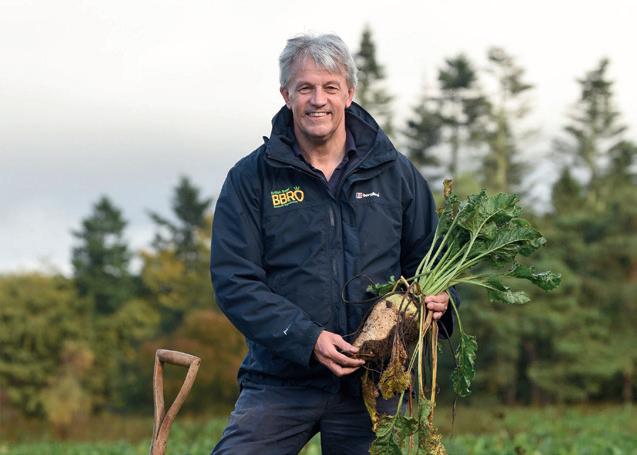
APRIL 2024 • MIDLAND FARMER 21
missed.”
and young crops are more vulnerable to the virus
Management tips for sugar beet following wet spring
• Target beet yield at least 80t/ha
• Input costs are finely balanced
• Establish crop and ‘get it going’
Sugar beet growers should target a yield of at least 80t/ha to ensure the crop pulls its weight during the 2024/25 season, say experts.
Prospects for sugar beet this season and recommendations for herbicide programmes were discussed by agronomists and other arable advisors during a webinar hosted by crop protection experts UPL.
Using the new contract price of £40/t, sugar beet gross margins look
competitive against combinable crops, says Jock Wilmott, partner and agronomist at farm business consultants Ceres Rural.
But the figures look less good when beet is considered on a cost-per-tonne basis, says Mr Wilmott, who has been advising growers about sugar beet for more than 20 years across Cambridgeshire and Hertfordshire.
“At £40/t, you would think the margins would be healthy, but if you look at it on a per-tonne basis, it isn’t as good as first thought.”
Not including the 2023/24 crop, the five-year average beet yields for the country are 71.5t/ha at 17% sugar, explains Mr Wilmott. An average beet crop costs almost £30/t to grow. Adding £500/ha for land rate increases the average cost to £37/ha.
This means the best way to improve sugar beet margins is to push the yield.
“Looking at the prices for cereals, the issues getting wheat crops established and how well they look, beet has to pull its weight this year. It is all the more important to get the yield above 80t/ha if you can.”
Input costs
Crop inputs comprise 40-45% of overall growing costs. Harvest and transport (40-45%) represent a large proportion too, although British Sugar’s transport allowance or beet delivery service will offset some of this.
Seedbed preparation, drilling, spraying, fertiliser and agronomy costs comprise the smallest proportion but are the most important. This means total costs are more finely balanced than the £40/t headline price would suggest.
“It is all about establishing the crop well, getting it growing, and closing

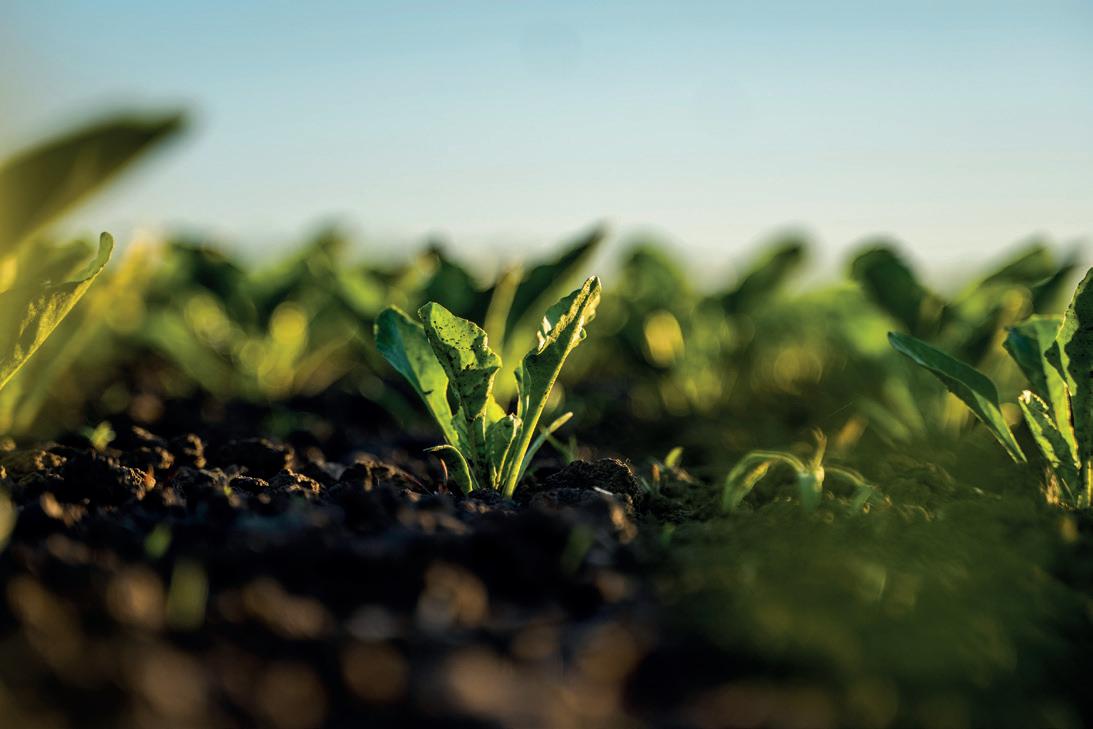



UREASE INHIBITOR NitroShield Protecting your nitrogen Improves Nitrogen Use Efficiency Reduces ammonia losses by 70%+ Contact us today 01526 396000 Visit www.omex.com Email agriculture@omex.com Root crops
22 MIDLAND FARMER APRIL 2024
Good crop establishment is vital to maximise yield potential

the canopy. This will help protect against virus yellows and mitigate any late herbicide sprays.
“Patience and attention to detail when preparing land for sugar beet will be critical this year. There is a margin in sugar beet, which has to support the other crops in the rotation, so a lot relies on a decent year.”
Most crops will need four postemergence broad-leaved weed sprays costing at least £150/ha. Most scenarios will involve blackgrass control, adding roughly another £35/ha for Centurion Max (clethodim).
Controlling volunteer potatoes with clopyralid or adding a pre-emergence spray further increases the overall cost. And where there are issues with weed control, often it is because the spray intervals are too wide.
British Sugar technical support manager Pam Chambers says: “My view is to follow up a successful first post-emergence spray closely with a second, especially if there is a high weed burden.”
Intervals between sprays become more of an issue when it is dry. The industry has missed desmedipham to boost the activity of herbicides, but Ms
>>

APRIL 2024 • MIDLAND FARMER 23
Root crops
Chambers believes its role can be partially replaced with adjuvants.
“In some situations, not including an adjuvant (with a herbicide) is like having gin without the tonic. In trials, I have seen a 50% increase in efficacy by including an adjuvant.”
The main reason for using an adjuvant oil with herbicides is to break down the waxes on a weed leaf surface to allow faster penetration of the herbicide into the weed, says Rob Sucking, commercial technical manager at De Sangosse.
“Ultimately, adjuvants increase herbicide uptake. In conditions like moderate to severe frosts, high diurnal range and fast-growing crops, using an adjuvant can increase the potential for herbicidal crop phyto expected under these conditions.”
Newman Cropspray 11-E is one of the most common adjuvant oils used with beet herbicides. Growers should adjust application rates depending on the temperature, says Mr Sucking.
A dose rate of 0.75l/ha is recommended up to 18°C. This should be reduced to 0.5l/ha if the temperature is between 18-21°C, with growers advised to switch to a methylated seed oil (MSO) above 21°C.
Herbicides
Straight herbicides based on metamitron, ethofumesate, and phen-
when combined, giving 100% of control against fat hen in BRRO and UPL trials at Bracebridge Health, Lincolnshire.
“In certain situations, a co-formulated (herbicide) solution fits,” says Mr Wilmott. “A dynamic situation where you have a mixture of dry and wet periods in the spring and sprayers are busy suits straight herbicides because you can adjust the rates.”
The value of a pre-emergence sugar beet herbicide often divides opinion among agronomists and growers. But Ms Chambers says soil moisture in 2023 resulted in good weed control from a pre-em.
“If you have blackgrass, I would look to do a pre-emergence of ethofumesate plus metamitron. Another good reason for a pre-em is if you are pushed for time and think the first post-em sprays will be challenging to apply at the correct time.”
Mr Wilmott suggests growers might not need a pre-emergence spray in the absence of problem weeds – although he acknowledges that using one could certainly help to take the pressure off.
“Doing some early metamitron followed by some rain will deliver a return. However, I don’t advise you to do it until you have seen the conditions ahead.”
Some 20,000ha of herbicide-tolerant
Beet has to pull its weight this year “
with British Sugar predicting a similar area this season, with the yield gap closing between Conviso varieties and conventional beet.
The one area where growers should avoid Conviso is if they have a beet cyst nematode (BCN) problem, says Ms Chambers. There are no BCN-tolerant Conviso varieties, although some are in development.
Mr Wilmott expects most Conviso beet to receive a conventional preemergence herbicide to help control weeds like black bindweed and give greater flexibility for the Conviso One (foramsulfuron + thiencarbazone-methyl) timing.
“One conventional broad-leaved weed spray and the Conviso herbicide is not expensive. But you also have to consider the additional cost of the seed and following the stewardship of the technology (by controlling bolters).”
There is also the question of what to do with blackgrass. “Conviso One is a relatively good blackgrass herbicide, but it is similar sulfonylurea (SU) chemistry to that being used elsewhere in the rotation, like Atlantis (metsulfuron-methyl + iodosulfuron-methyl).”
Good seedbeds for sugar beet are in short supply this
Growers should be mindful of resistant blackgrass and use a blackgrass active pre-emergence spray and Centurion Max in a programme with Conviso One if they think they have tar-

24 MIDLAND FARMER APRIL 2024
>>


































For more information or to purchase contact: Mark Carter 07950 313704 info@bionatureagriculture.com www.bionatureagriculture.com Achieving greater returns for your potatoes Increase tuber weight and improve uniformity Reduce internals and calcium related disorders Improve resilience to stress Greater root development which enhances nitrogen use efficiency Reducing nitrogen pollution in ground water Enhancing skin finish We can help you achieve these results by using these products with your blight sprays:
Fodder beet could be popular choice this spring
• Cost-effective energy source
• Attention to detail is needed
• Varietal choice is important
Fodder beet could offer livestock farmers a cost-effective energy source this year – but growing it will require careful management following an especially wet winter.
“Fodder beet is a crop that requires investment and attention to detail,” says Ryhs Owen, of agronomy specialists ProCam. “However, done right, it can be the most cost-effective forage crop available.”
A typical dry matter yield of some 25t/ha means fodder beet can cost as little as 5-6.5p/kg DM. This is about one third to half the cost of grass silage on many farms – and cheaper than 8-10p/kg DM for kale.
Fodder beet is drilled earlier than most forage crops, with the optimum sowing period being mid-March to the end of April. In all cases, site selection is the first consideration alongside the correct seedbed preparation.
Seedbed
Light and medium bodied soils that are free draining are best, with a pH of 6.5 or higher. Optimum establish ment and crop growth will be achieved with a fine and firm seedbed in the up per 5-7cm, with a more open structure below.
“If you are intending to graze the crop in situ, it’s important to plan ahead of drilling in order to optimise the layout,” says Mr Owen.
“If planning to transition cattle on to beet, leave a 6m headland to allow them space.
“Also, drill in a direction that en ables the fence to be positioned along the rows, which simplifies allocation of the crop to all stock. If the field is sloping, always aim to graze down hill.”
Maximising returns will depend on choosing a suitable variety. Grazing cattle will favour a medium DM vari ety like Geronimo (above), with sheep or young cattle thriving on a lower DM variety, such as Lactimo, that sits out of the ground more.
Canopy closure
“In all cases, I’d recommend using primed or pre-germinated seed, as this will result in a faster and more even establishment, with the crop reach ing canopy closure more quickly,” says Mr Owen.
“Primed seed is an important ad vance in fodder beet growing. It should be used alongside a number of other significant agronomic improvements in order to achieve full potential.
“Where a crop is destined for graz ing, for example, fertiliser application and disease control should be geared towards maintaining green leaf growth longer into the season, boosting overall yield and protein content.”
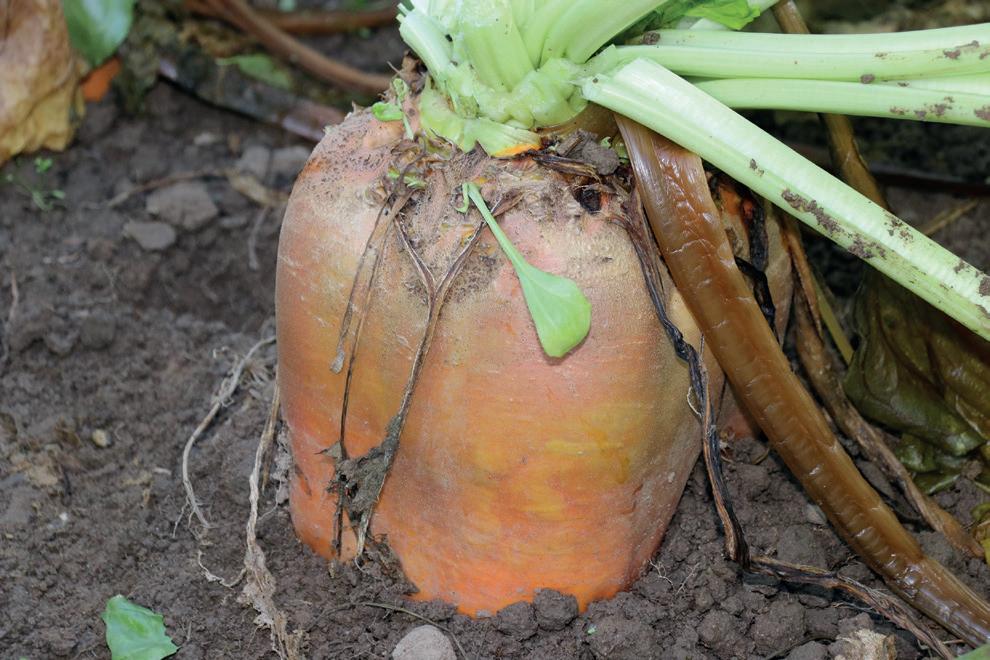
Five steps to success with fodder beet
• Opt for suitable site and seedbed
• Plan field layout ahead of drilling
Fodder beet has a total nitrogen requirement of about 200-240kg/ha, compared to 120-150kg/ha for traditional beet, says Mr Owen. But the right inputs at the right time will help ensure it outperforms many other for-
• Choose proven varieties which are compatible with end use
• Select primed seed
• Use tailored agronomy

26 MIDLAND FARMER APRIL 2024
Root crops
Maintaining green leaf growth longer will maximise yield, says Rhys Owen


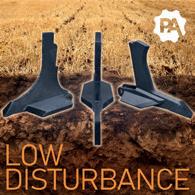

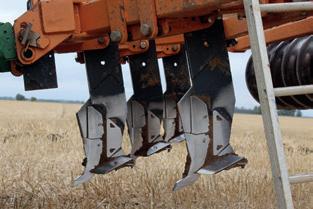










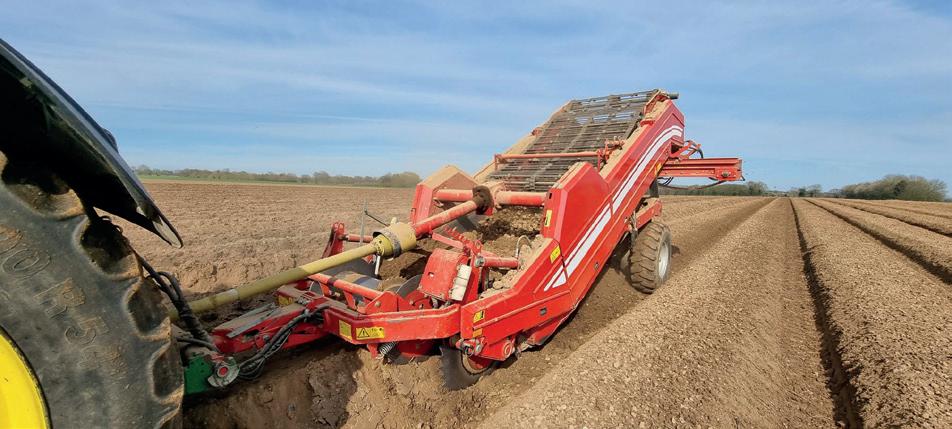


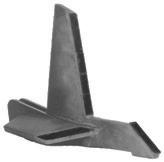
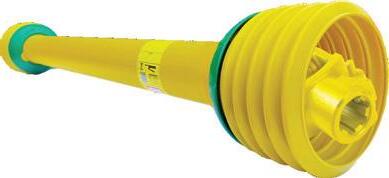
01277 890 595 www.johnstruct.co.uk 4 FREE advice 4 Planning 4 Refurbishment 4 Project Management 4 Hassle Free Steel Framed Buildings Covering Bedfordshire, Cambridgeshire, Essex, Hertfordshire & Suffolk Looking for an independent, reliable and practical ‘one stop shop’ steel framed building service with the personal touch? Contact Johnstruct Ltd today... • Refrigeration • Ambient Systems • Louvres or Flaps • Ventilation Ducts • Servicing Grain Stores Drive Over Floors • Fans • Heaters • Tunnels • Fan Houses • Automatic Controllers APRIL 2024 • MIDLAND FARMER 27
EXCEEDED OUR EXPECTATIONS
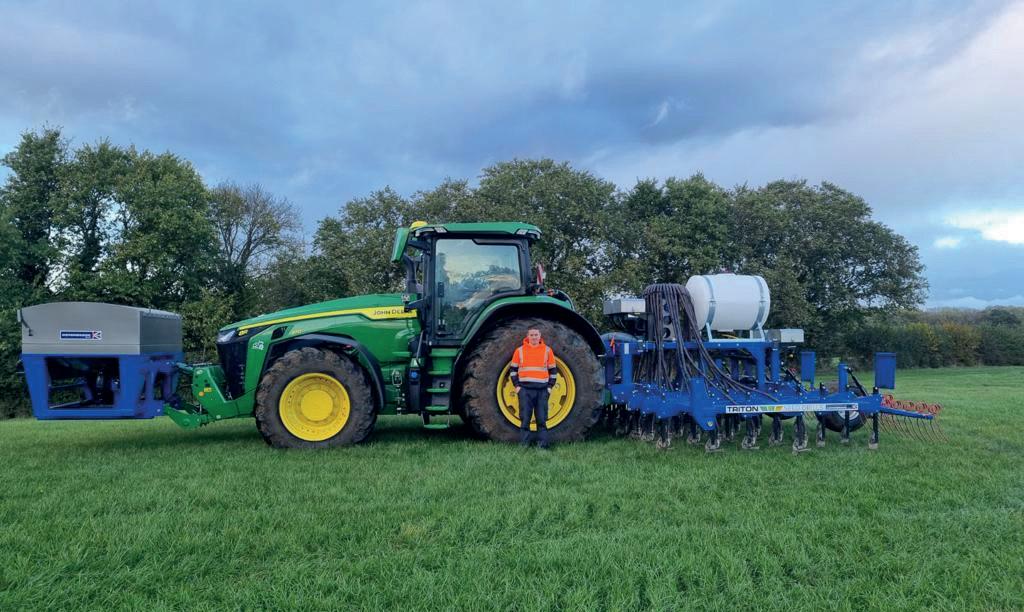

Richard Hellyer Farm Manager
on a 700ha heavy clay farm at Hatley St George, Bedfordshire
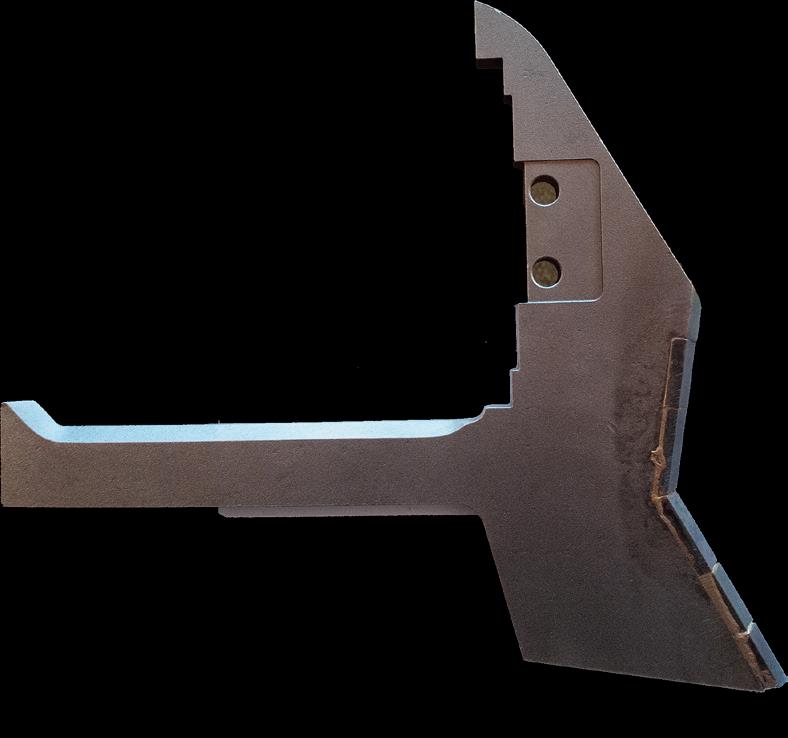
labour and fuel costs. The Triton has allowed us to drop spring drilled from rotation. The Triton with dramatic reduction in and with wheats averaging 11tha which higher getting from heavy cultivation and It true to that the will drill clay in virtually any and gives the confidence wheat later black
We purchased the Triton 6m drill in 2021 to replace heavy cultivations and reduce labour and fuel costs. The Triton has allowed us to maximise our winter wheat acreage and drop spring drilled crops from the rotation. The Triton drill has exceeded our expectations with a dramatic reduction in costs and with wheats averaging 11tha which is higher than we were getting from our previous heavy cultivation and plough system. It is true to say that the Triton will drill clay effectively in virtually any conditions and gives the confidence to drill wheat later to reduce black grass.
labour and fuel costs. The Triton has allowed us to drop spring drilled crops from the rotation. The Triton drill has exceeded our expectations with a dramatic reduction in costs and with wheats averaging 11tha which is higher than we were getting from our previous heavy cultivation and plough system. It is true to say that the Triton will drill clay effectively in virtually any conditions and gives the confidence to drill wheat later to reduce black grass.
Twin hold roll pin blade removal system and backward leaning air borne upper blade for trash lift and ease of trash flow
backward leaning air borne upper blade for trash lift and ease of trash flow
Twin hold roll pin blade removal system and backward leaning air borne upper blade for trash lift and ease of trash flow
Seed depth tail 40mm deep holding the seed at correct depth and placing seed on either side of seed terrace
Seed depth tail 40mm deep holding the seed at correct depth and placing seed on either side of seed terrace
at correct depth and placing seed on either side of seed terrace
Next Generation Patented Drilling Blades
Next Generation Patented Drilling Blades
Next Generation Patented Drilling Blades
direct drill in 2018 to give plough based yields from direct drilling. Six years later we are
Triton than from ploughed trials on our own land. The Triton is the only all weather seed drill on the market that gives the flexibility whilst reducing blackgrass from late drilling. A number of other manufacturers are now claiming all weather capabilities – don't
Triton launched its unique deep soil engagement direct drill in 2018 to give plough based yields from direct drilling. Six years later we are consistently achieving higher yields from the Triton than from ploughed trials on our own land. The Triton is the only all weather seed drill on the market that gives the flexibility to grow maximum profit autumn sown crops whilst reducing blackgrass from late drilling. A number of other manufacturers are now claiming all weather capabilities – don't be caught out, get a demo against a Triton.
Triton launched its unique deep soil engagement direct drill in 2018 to give plough based yields from direct drilling. Six years later we are consistently achieving higher yields from the Triton than from ploughed trials on our own land. The Triton is the only all weather seed drill on the market that gives the flexibility to grow maximum profit autumn sown crops whilst reducing blackgrass from late drilling. A number of other manufacturers are now claiming all weather capabilities – don't be caught out, get a demo against a Triton.

daily videos @tritonuk
facing upper blade does from below stale seed bed
Downward facing upper blade does not hook grass weed seed up from below stale seed bed and field surface
Downward facing upper blade does not hook grass weed seed up from below stale seed bed and field surface
Triangular tungsten tiles for reduced draught and soil disturbance
Triangular tungsten tiles for reduced draught and soil disturbance
reduced draught and soil disturbance

SOIL SURFACE
SOIL SURFACE
SOIL SURFACE
Drilling at 40mm depth
Drilling at 40mm depth
facing upper blade holds field surface
minimising soil eruption in the stale seed bed
Downward facing upper blade holds field surface in place minimising soil eruption in the stale seed bed
Downward facing upper blade holds field surface in place minimising soil eruption in the stale seed bed
14cm deep lower blade takes blade deep below ground for air drainage and rooting
14cm deep lower blade takes blade deep below ground for air drainage and rooting
14cm deep lower blade takes blade deep below ground for air drainage and rooting
Triton UK: 01223 891888 (East Anglia & Midlands)
Triton North & Scotland: 07712 831718 (Steve) (S.T. Gowan Agri)
Southern agent: 07970 549012 (Richard Peck)
Triton UK: 01223 891888 (East Anglia & Midlands)
Triton North & Scotland: 07712 831718 (Steve) (S.T. Gowan Agri)
Abington Farm Park, Great Abington, Cambridgeshire CB21 6AX
Abington Farm Park, Great Abington, Cambridgeshire CB21 6AX
www.tritonseeddrills.com
www.tritonseeddrills.com
Abington Farm Park, Great Abington, Cambridgeshire CB21 6AX www.tritonseeddrills.com Triton UK: 01223 891888 (East Anglia & Midlands) Triton North & Scotland: 07712 831718 (Steve) (S.T. Gowan Agri)
daily videos @tritonuk
Grants on offer for animal health and welfare equipment
• Application deadline closes on 1 May
• Funding available for over 130 items
• Useful way to upgrade farm facilities
Livestock producers have one month left to apply for equipment grants to improve animal health and welfare on their farms.
The expanded Farming Equipment and Technology Fund grant scheme offers funding towards a broad range of commonly used pieces of equipment and technology.
The Animal Health & Welfare section of Defra’s Farming Equipment and Technology Fund offers partfunding for more than 130 items, including an additional 29 new products compared to previous years.
These include handling facilities, weigh crates, livestock cameras, automatic drench gun and EID readers.
The minimum grant funding is £1,000 and the maximum is £25,000, towards the cost of the equipment.
Increased grants
For many items, this percentage is an increase on last year. This funding will go towards either the average cost
of an item purchased from a Defraapproved list – or the actual cost paid for the item if it is less than the cost on the list.
Applications must be made before 1 May. Separately, farmers can apply for grant funding of between £1,000 and £50,000 for productivity and slurry items. Applications for this part of the scheme close on 17 April.

Megan Proctor, a rural surveyor with Galbraith, said: “This is a useful source of support for farm businesses, particularly as input costs have risen significantly – especially for feed and fertiliser.
“It is worth setting aside some time to assess what equipment you may need and whether it is covered by the scheme. It can feel like just more paperwork at a very busy time of the year, but in our experience it is well worth submitting an application.”
Competitive fund
The fund is competitive. Farmers who decide to apply can increase their
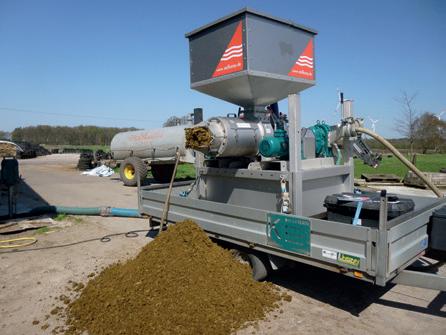
Grants are available for a range of livestock equipment
“It is well worth applying
application score – and chance of grant approval – by providing evidence that they have discussed their application with a vet.
Veterinary advice can be obtained by telephone, email, or as part of a vet visit. Farmers may be eligible to apply for a fully-funded vet visit as part of the Sustainable Farming Incentive annual health and welfare review.
Farmers must have received veterinary advice on their application after 1 January for it to be eligible. They will need to provide their vet’s details, the date of the discussion and permission for Defra to contact the farm vet following an application. For details, visit bit.ly/FETF2024
Funding for slurry kit
Grants for a range of slurry equipment are availab le under the Farming Equipment and Technology Fund (FETF) 2024. Eligible products include dribble bar and trailing shoe applicators, hose reels and drag hose, slurry separators, flow- meters, mobile slurry chopper pumps and remote-control systems for engine-driven pumps.
Significant funding is available for slurry separators which are a useful management tool, says Terry Baker of slurry specialists Tramspread.
“Removing solids from slurry makes in-store management easier.This provides increased application output from both tankers and umbilical systems. Less friction in umbilical hoses allows for longer pumping distances and reduces wear on the pump, hose and applicator, and saves fuel too."
FETF grants are available for mobile separators for the first time, and there are two Stallkamp options. Funding is also available for fixed separators. Tramspread also supplies pumps, gantries and control panels.
APRIL 2024 • MIDLAND FARMER 29
Livestock
mobile
eligible
Fixed and
slurry separators are
for the grant.

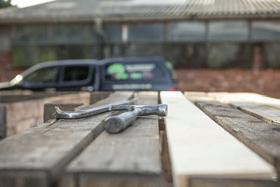







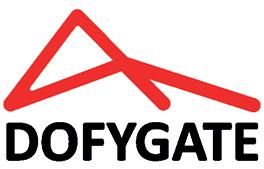



We have fantastic options for both breeders and growers in outdoor, indoor straw based or Red Tractor systems You will receive: Support from our experienced team of Vets and Field staff Guaranteed income We offer a wide range of contract arrangements Interested? Contact us today Cal Us OPPORTUNITIES We are looking for pig farmers to work with Pilgrim’s Richard Gooding 07802596697 www.bqp.co.uk richard.gooding@pilgrimsuk.com POTATO BOX REPAIR Call Adam: 07970 433 470 Email: adam@farmlinc.co.uk www.farmlinc.co.uk • On site box repairs • Fast, efficient, professional service • Flexible to suit your needs • Large or small quantities • Box alterations, re-branding, and other work considered • Store cleaning also offered Lincs based - will travel AUTOMATED BIOSECURITY BARRIERS DOFYGATE 3 Supporting Your Biosecurity Procedure Stop – Dip Feet – Wash Tyres – Sign In 01263 493 102 www.dofygate.co.uk Come and see us: Stand 10-300 01263 493 102 www.dofygate.co.uk DOFYGATE 3 Supporting Your Biosecurity Procedure Stop - Dip Feet Wash Tyres - Sign In Come see us at stand 10-300 30 MIDLAND FARMER APRIL 2024
Pig & Poultry
Flagship industry event opens door to success
• New technologies and advice
• Fresh thinking and innovation
• Low carbon future is key goal
Innovation and collaboration will be the focus of this year’s Brit ish Pig & Poultry Fair – helping producers secure a low carbon future.
New technologies and advice on dis ease management and alternative pro teins will also be among the topics at the two-day event, which takes place on 15-16 May at the Birmingham NEC.
“It is the job of everyone in the sup ply chain to work together to reduce the industry’s carbon impact, and new thinking and technology provide some of the answers here,” says fair organiser Alice Bell.
Listening system

these next steps will play out.”
One example is a new pig “listening” system. It uses artificial intelligence and machine learning algorithms to monitor coughs and forecast the potential onset of respiratory diseases.
Developed by Boehringer Ingelheim, tests have shown the system can detect issues such as PRRS and Mycoplasma hyopneumonaiae five days earlier than by human observation alone.
With more rapid treatment and management, this was calculated to improve daily growth rates by an average of 12.7g, reduce antibiotic treatments by 23.4%, and generate a 1:4 return on investment.
Pig and poultry producers could both benefit from a new digital emergency planner from Livetec Systems. It helps farmers prepare for events ranging from flooding to notifiable disease outbreaks.
Rapid response
“This is critical when farm businesses are under pressure to respond quickly,” says Livetec technical director Julian Sparrey.
Egg producer James Baxter will explain how a robust contingency plan saved him £45,000 by reducing the amount of time before depopulation could start following an avian influenza outbreak.
Another Innovation Theatre session will examine how a new highly absorbent straw crumb is being provided free to farmers when manure is processed into biomethane and biobased fertiliser.
This fertiliser can be used to displace predominantly imported fossil
Thousands of producers will attend the Pig & Poultry Fair
We can tackle the challenges together
Alternative feeds
A forum on insect farming, with Beta Bugs and Flybox talking about their combined solution which takes complexity and cost out of insect farming, by supplying eggs and larvae in containerised systems.
“Demand for insect protein as alternatives to existing feed ingredients is increasing, making insect farming a mainstream opportunity,” says Beta Bugs chief executive Thomas Farrugia. For full details, visit www.pigandpoultry.org.uk
Expert speakers address key issues
Some 330 exhibitors are due to attend the Pig and Poultry Fair – with visitors able to listen to dozens of speakers. “This is a chance to discuss the challenges and topical issues of the day," says Charlotte Evans of the Agriculture and Horticulture Development Board. “As an industry we can tackle the road ahead together.”
Opportunities
Headline sessions in each discussion theatre include pig, egg and poultry meat outlooks. This will see speakers from across the supply chain share their views on the prospects for their
specialist sectors.
Other pig forums include contingency planning for African Swine Fever, and a practical workshop looking at how slurry and waste management can help farmers on their journey to net zero.
One session will examine how young people can be encouraged to eat more pork; another will explore grants available for new poultry equipment and infrastructure.
Fair partner ABN will explain how precision feeding and sustainable replacements for soya are set to be a key part of reducing carbon emissions, improving efficiencies and profitability.
APRIL 2024 • MIDLAND FARMER 31
“
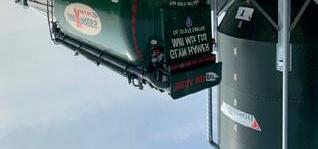
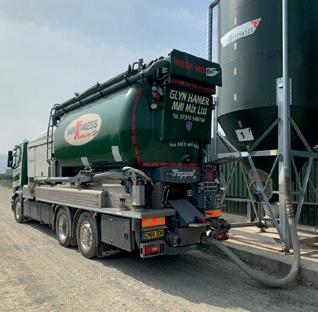








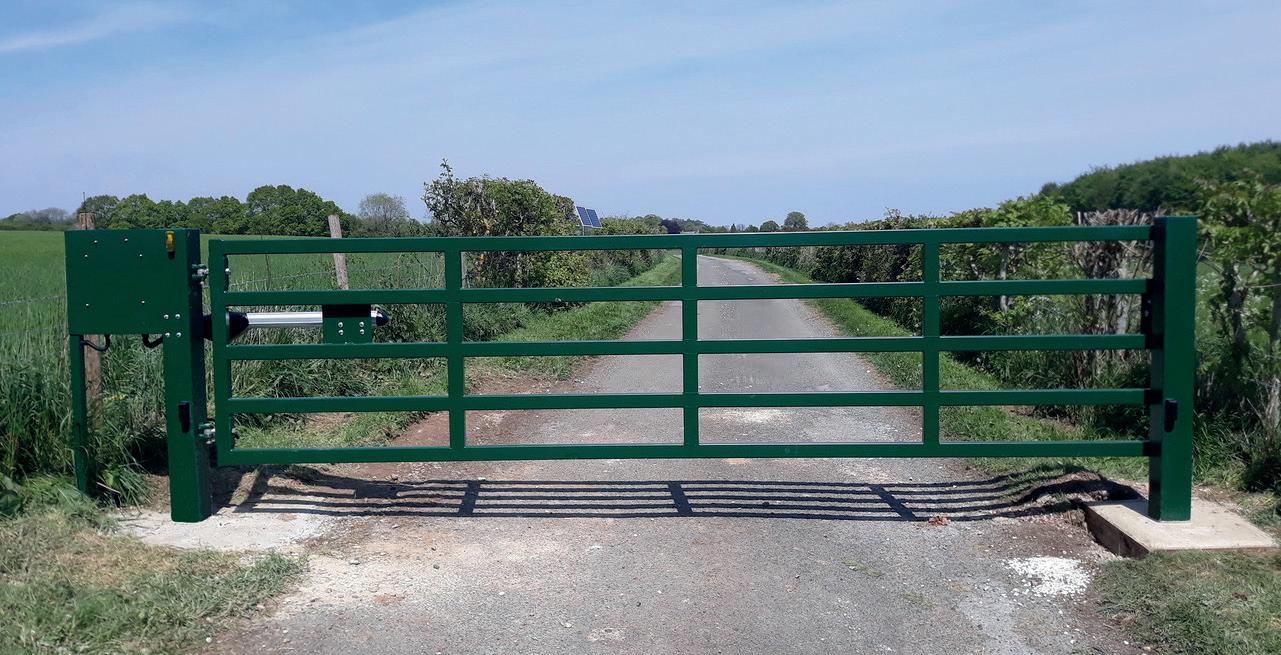

Due to ongoing expansion Wayland Farms are looking for good quality, straw based existing or new build pig breeding, rearing and finishing accommodation We offer competitive rates and long-term, processor aligned contracts Principally we operate across East Anglia but all areas within 120 miles of IP25 6LW will be considered WANTED PIG BREEDING, REARING AND FINISHING ACCOMMODATION Call for your FREE security gate review now: 01993 840066 www.solargatesystems.co.uk mail@solargatesystems.co.uk • UK designed for UK use • No costly mains cable to lay • We can automate any gate up to 24ft • Award-winning Winter Harvesting® technology • Power and reliability ensured by a 36volt Brushless Technology system SECURE YOUR FARM GLYN HAMER MILL MIX LTD WE PROVIDE MOBILE FEED MILLING AND MIXING SERVICES FOR ALL BREEDS OF ANIMALS AND POULTRY, FROM STRAIGHT ROLLED CEREALS OR HAMMERMILLED PULSES TO COMPLETE MIXED RATIONS AND FEED BIN TRANSFERS. MOBILE FEED MILLING AND MIXING SERVICES FOR ALL BREEDS OF ANIMALS AND POULTRY To discuss your farm’s requirements please give us a call on: James - 07584 582 598 Glyn on 07976 548766 / 01568 750 183 E: info@glynhamermillmix.co.uk W: www.glynhamermillmix.co.uk With numerous suction and discharge options including directly into feed bins or separate bunkers, we are able to provide an efficient, traceable and consistently high standard of service for our customers. Based in the West Midlands we run a fleet of modern ‘Tropper’ machines specifically built for precise mixing and accurate weighing operated by our experienced, friendly drivers. 32 MIDLAND FARMER APRIL 2024
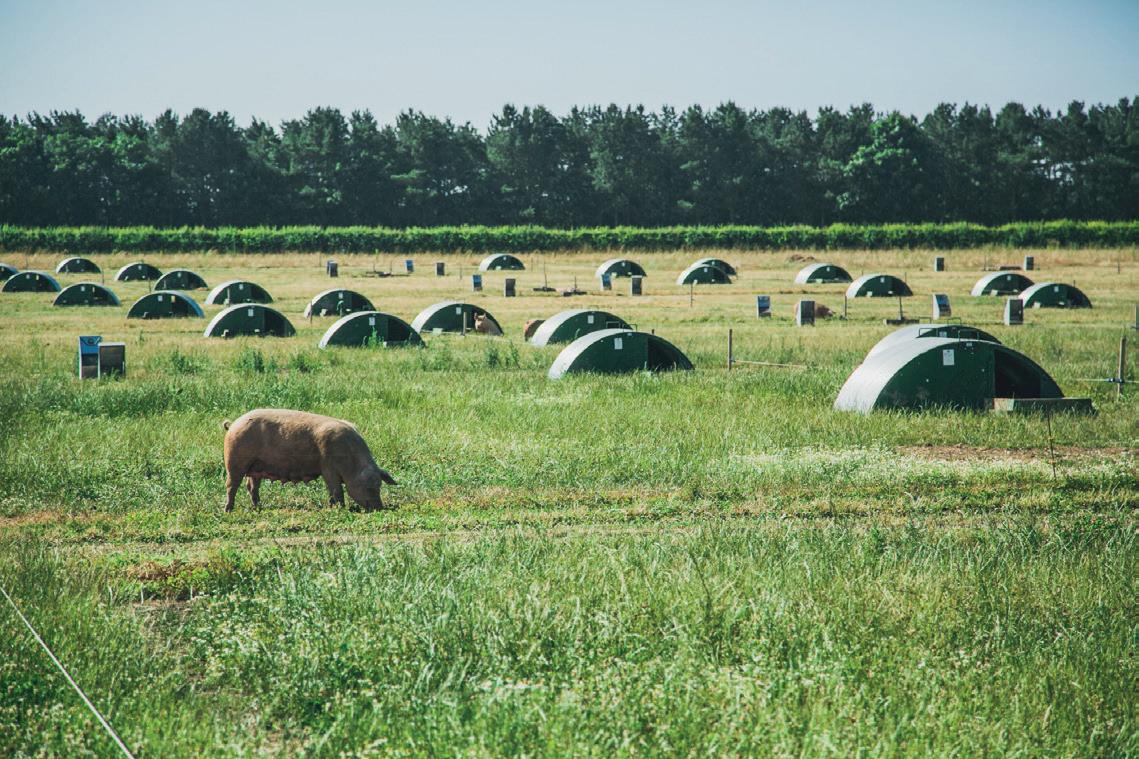
set to reach net zero
Pig project set to reduce emissions
ANottinghamshire pig producer has joined a pioneering programme that will see retailer M&S work with farmers to decarbonise its meat supply chain and reach net zero by 2040.
Wold Farm, which supplies M&S pork through Cranswick, is one of seven farming enterprises taking part in the seven-year Farm of the Future programme. The initiative aims to reduce greenhouse gas emissions while boosting wildlife and habitat creation.
‘Significant challenge’
Working with Harper Adams University’s School of Sustainable Food and Farming, it will also provide the opportunity to identify where system change may be required, all within the context of continuing to produce high-welfare pork for M&S.
Cranswick agricultural strategy director Ash Gilman said the Farms of the Future Programme would help the company reach net zero. Progress had already been made and further inroads would be achieved through a combination of measures.
“We have achieved a 33% reduction in our pig carbon footprint (kg C02eq/ kg LW) against our 2019 baseline, and while we have set out a decarbonisation strategy to net zero, and have large scale commercial trials in
place, achieving this will be a significant challenge.
“It will require changes in feed mill infrastructure, greater understanding of soils and carbon, and the ability of carbon calculators to use actual – rather than reference – data.”
‘Real focus’
Steve McLean, head of agriculture at M&S Food, said the retailer was on track to reaching net zero by 2040. He added: “Over 70% of emissions of our food business come from primary
It is clear this needs real focus
brings on farm, and the need to contin ue to produce affordable, high-quality food from sustainable supply chain relationships. We are committed to helping our M&S Select Farmers navigate these challenges.
“This new initiative will enable us to support innovative approaches on seven of our M&S Select Farms, with the findings being shared across our whole supply base and the wider industry to help drive real change.”
Mr McLean said M&S was committed to collaborating with farmers and with the Harper Adams School of Sustainable Food and Farming. “We are confident that this collaborative approach will deliver a step-change in the industry’s approach to decarbonising food production.”
Fellowships for pig industry stalwarts
The National Pig Association has awarded lifetime fellowships to three industry stalwarts in recognition of their service to the sector.
Pig producers Sally Stockings and Sam Godfrey were presented with fellowships last month after standing down from the Pig Industry Group (PIG). Howard Revell will be presented with a fellowship at next month’s Pig & Poultry Fair.
The NPA board and PIG voted unanimously to award the fellowships in recognition of exceptional service to the NPA and to the UK pig industry – including their support, commitment and passion for the sector.
A further accolade has been awarded to NPA veteran Hugh Crabtree, who was already a lifetime fellow. Mr Crabtree, who was the NPA's first vice-chairman when it was established in 1999, received an ornamental glass pig.
Mr Crabtree chaired the NPA Allied Industry Group for many years before, once again, taking on the role of vice-chair three years ago, after the successful merger of the AIG and PG to form the PIG.
NPA chairman Rob Mutimer said: “Hugh has been the most fantastic chair and support to me. We did not agree on everything, but he has always challenged us in a unique way and has been an incredible asset to have.”
APRIL 2024 • MIDLAND FARMER 33
“


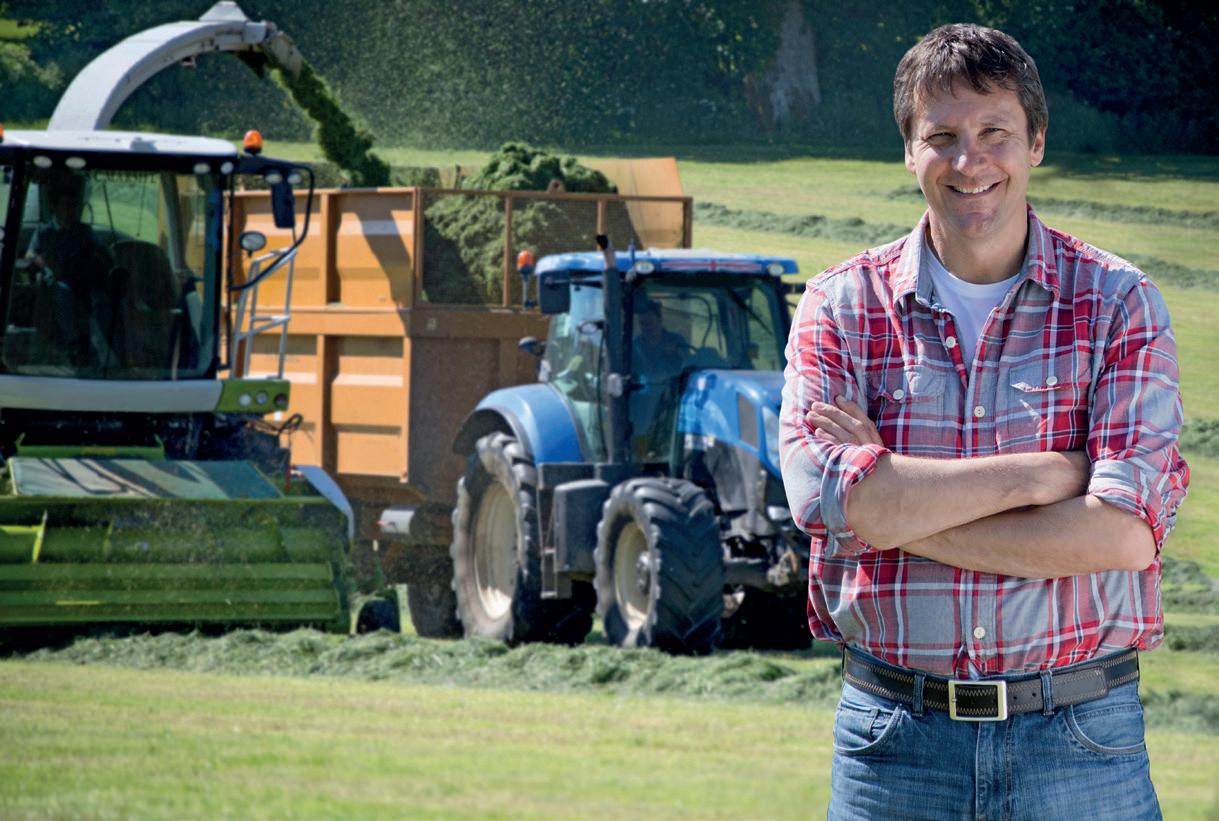
on Bias tyres 5 year warranty on Farm Radial tyres 7year warranty Offering a wide range of agricultural and off the road tyres, Ascenso aims to provide long-lasting tyres that are specially designed for a variety of farming applications, keeping everything in mind including vehicle type, terrain, weather and user needs. For Ascenso Tyres in the UK, contact your local tyre dealer or visit www.ascensotyres.co.uk Trade enquiries: enquiries@ascensotyres.co.uk | 01205 743163 Agricultural | Industrial & Construction | Material Handling | Earth Mover | Forestry YOUR FIELD IS OUR FIELD To find out more about our farm profiles contact our farming team on 01502 725862 Midland Farmer 34 MIDLAND FARMER APRIL 2024
Free test helps tackle cause of post-weaning diarrhoea
Pig producers are being encouraged to reach out to their vets to perform free diagnostics if they are concerned about post-weaning diarrhoea (PWD).
Elanco is funding veterinary testing for the F4 and F18 strains of E. coli – both of which are a common causes of PWD and have shown to be present on 78% of farms, says strategic account manager Gillian Bryson.
Historically, PWD was kept at bay by zinc oxide, which has been banned. But its use also masked a multitude of potential issues which are now becoming more evident – highlighting the importance of understanding the root of the problem.
“Tests are available free of charge
Tackle the root cause of PWD with free diagnostic tests says Gillian Bryson (above right)
Rainbow kits
Producers can access fully funded diagnostic tests, such as rainbow kits and polymerase chain reaction (PCR) tests, free of charge through their vet – giving an instant result and will confirm whether the herd is suffering from E. coli.
“PCR tests don’t provide immediate results, but offer more detail, including identifying whether F4 and F18 strains are present on farm, even if E. coli is not directly affecting the herd" says Ms Bryson.
“This is important because once these strains of E.coli are present, it is near on impossible to get rid of them, so preventative measures must be im-
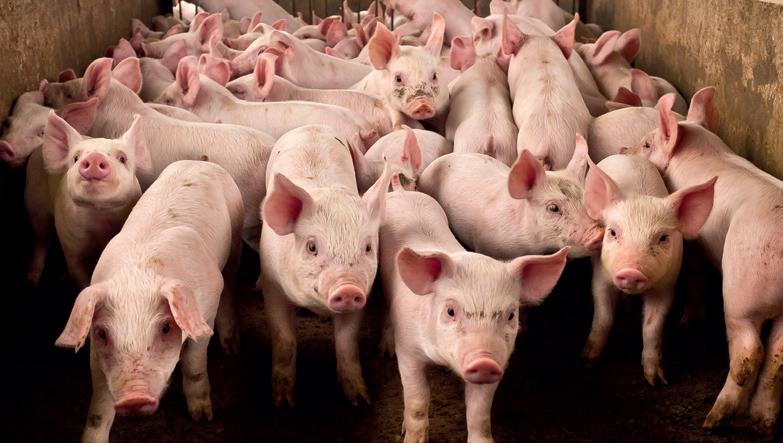
Small poultry keepers must register bird flocks
New measures to better protect the poultry sector from avian influenza outbreaks have been set out by the government.
Under the changes, all bird keepers – regardless of flock size – will be required to officially register their birds. Currently this only applies to flocks of 50 birds or bigger, limiting the effectiveness of disease control measures.
By registering their birds, Defra says keepers will ensure they receive important updates relevant to them, such as on
any local avian disease outbreaks and information on biosecurity rules to help protect their flocks.
Control zones
This will help to manage potential disease outbreaks, such as avian influenza and Newcastle disease, and limit any spread. Information on the register will also be used to identify all bird keepers in disease control zones.
Defra says this will allow for more effective surveillance, so zones can be lift-

plemented to protect herds.”
Ms Bryson recommends producers work closely with their vets to put together a robust health management programme including the use of a vaccine to ensure effective protection against the most common strains of E. coli.
Early protection
Only one vaccine on the market offers herds effective protection against F4 and F18 strains of E.coli, says Ms Bryson. Piglets can be vaccinated from 18 days old with full immunity after seven days, providing early protection against the disease.
Piglets vaccinated with Coliprotec have shown increases in appetite resulting in slaughter weight gains of up to 2kg, while also reaching market weights seven days earlier.
“If you have any concerns about PWD or E. coli, get in contact with your local vet to discuss how diagnostics can support the overall health of your herd,” Ms Bryson concludes.
ed at the earliest possible opportunity and trade can resume more quickly following an outbreak of avian disease in Great Britain.
The changes come following the UK’s worst ever outbreak of avian influenza, with more than 360 cases across Great Britain since late October 2021, including in a significant number of backyard flocks.
UK chief veterinary officer Christine Middlemiss said: “These new rules will enable us to have a full picture of the number and location of birds kept across Great Britain, making it easier to track and manage the spread of avian disease.
“This information will be vital in helping to inform future risk assessments and maintain our commitment to continually building our extensive avian influenza research portfolio.”
Pig & Poultry
APRIL 2024 • MIDLAND FARMER 35
Key appointment for expanded poultry team
Lallemand Animal Nutrition has expanded its monogastric team by appointing a new poultry sales manager with a wealth of industry experience.
Antonia Chittock brings more than 13 years of poultry expertise to the team – having started her career at AB Agri as a feed sales trainee and progressing to account manager before moving to ForFarmers as a key account manager in 2016.
Natural progression
This was followed by a stint at family feed supplier Marriages. In 2021, Ms Chittock diversified from feed sales to selling in-feed pathogen control products and milling efficiency solutions with Anitox.
“It seemed a natural progression joining Lallemand,” she says.
“Their commitment to optimising animal performance and well-being through microbial solutions aligns
with my core principles, to support financially sustainable businesses while contributing to food safety and high animal welfare stand ards.”
Previous roles involved selling direct to farmers and integrat ed businesses. An understand ing of diets and microbial so lutions should prove useful for Lallemand customers.
“I’m excited to be part of the Lal lemand team as I see major value in their product portfolio, and I’m looking forward to show casing this, with the sup port of the wider techni cal team.”
Ms Chittock says she is looking forward to reaching out to new and existing custom ers to explore how Lallemand’s micro bial solutions could
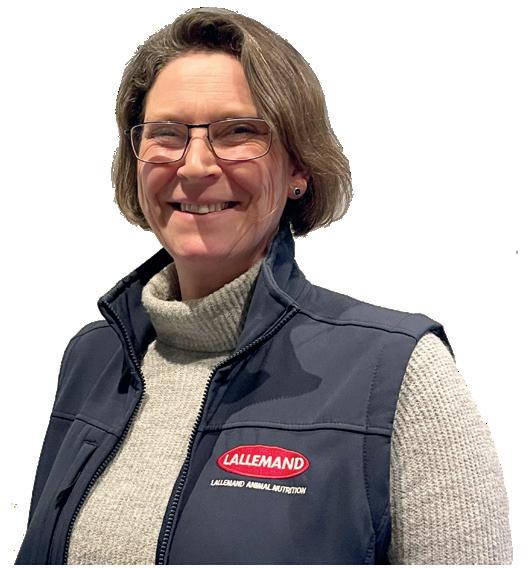
support their businesses –improving poultry health, welfare and performance.
Lallemand Animal Nutrition country manager Lee Gresham described the appointment as an excellent fit for Lallemand. "We’re really excited to have her on board, helping to increase exposure and uptake of the benefits of our microbial solutions.”
AUTOMATIC FLUSHING FOR DRINKER LINES
• Hygienic water supply due to regular flushing of the lines
• Cuts down on labour-intensive manual flushing
• Easy to control system via the ViperTouch computer
Newquip Limited
NQ House | Conygarth Way | Leeming Bar Business Park
Leeming Bar | Northallerton | North Yorkshire DL7 9EE
Tel. 01677 428600 | enquiries@newquip.co.uk
www.newquip.co.uk | www.bigdutchman.com


Pig & Poultry
Lallemand poultry sales manager Antonia Chittock
36 MIDLAND FARMER APRIL 2024
Hybrid rye brings benefits to pig and poultry rations
Helps to reduce carbon footprint
Hybrid rye is increasingly being seen as bringing significant benefits to pig and poultry rations as well as having major agronomic benefits for growers with its low nitrogen requirement and tolerance to increasingly frequent drought conditions.
The earlier advantages seen when rye is fed to pigs are now being added to following results seen in trials by KWS and feed producer Harbro with 16,000 egg laying hens.
The trial compared a wheat-based ration with one where rye replaced the wheat by up to 25% with no material differences between the two rations being found, explains KWS UK's Dominic Spurrier.
"From hen health through egg numbers, egg size and quality and litter waste, there were no differences between the two 8000 bird flocks.
Historically egg producers have been reluctant to include rye, thinking that there may be a detrimental effect on egg production, in terms of egg numbers, size and shell strength.
"From this data egg producers can be confident that feeding rye to hens up to 25% has no adverse reaction.
"This benefits egg production because firstly the costs of feeding rye are lower but, much more importantly, supermarkets and other sellers of eggs are increasingly looking for products that have lower carbon footprints to meet the UK's 2030 targets.
"The agronomic advantages of hybrid rye together with its very low nitrogen requirement mean the carbon footprint of eggs produced from rye-
both in controlled conditions and commercial situations."

Established benefits
KWS veterinarian Richard Grone says the benefits of feeding rye in pig production have been confirmed all over the world in recent years. It is widely used in farm-produced pig diets in Denmark, Germany, Russia, Poland and Spain with growing interest in the UK.
“Trials to assess how the inclusion of rye in pig diets affects performance have shown promising results on growth rate, feed intake and Feed Conversion Ratio (FCR).
“Major improvements in performance, health, behaviour, and wel-

Latest trials carried out in the UK with ABN have shown hybrid rye can successfully be included in finishing pig diets at rates of up to 60%, he ex-
“Hybrid rye can be substituted oneto-one for wheat and barley, so it offers many possibilities for feed compounders and producers.
“It can be fed as meal, liquid or pellet-based feed. It is high in dietary fibre, which promotes satiety, gut health and calm behaviour.
"It can also boost energy supply at farrowing and its levels of arabinoxylan, which is converted to butyrate in the animal’s hind gut, far exceed those of wheat.
“Rye is 2%-3% lower in crude protein than wheat, yet offers an excellent amino acid profile, particulari-
“Hybrid rye also delivers nitrogen and agrochemical savings without compromising yields, while its straw acts as a novel stimulus and helps to further reduce aggression.”
Nitrogen efficiency
According to KWS technical trials manager Olivia Potter, trials with the hybrid rye variety Tayo have shown outstanding Nitrogen Use Efficiency (NUE) results.
In one trial in North Walsham, Norfolk, Tayo produced the same 10.84t/ha yield from both 80kg N/ ha and 120kg N/ha fertiliser regimes underlining the crop's potential to help growers make major cost savings.
"Hybrid rye has a lot going for it in terms of marketing opportunities, benefits to the rotations and drought resistance, but it's ability to produce high yields from relatively modest amounts of applied nitrogen is making it increasingly attractive.
"We've known for some time that fertiliser requirements with rye can be roughly half that of a second wheat with savings of 100kg N/ha and more being achievable, but Tayo seems to be capable of taking this even lower.
“In comparison to second wheat grown for feed which is likely to require around 220kg N/ha, hybrid rye would typically require just 120kg N/ ha, but Tayo is showing the potential to cut this by a further third."
APRIL 2024 • MIDLAND FARMER 37
Richard Grone: Major benefits in pigs

Measure GRASS to Maximise Production
Dairy - Sheep - Beef Farmers Rotationally Grazed & Measured with PLATEMETERincreases Kg/Hectare by 10-30% + Lays down Carbon
Options:
F200 Neo - Conventional G1000 Neo - Bluetooth (Grant aided) Grasshopper - Bluetooth (Grant aided)
Available for immediate despatch
From £450


For best advice call 01452 741112 www.agrisupplyservices.co.uk
info@goldingham-contracts.co.uk
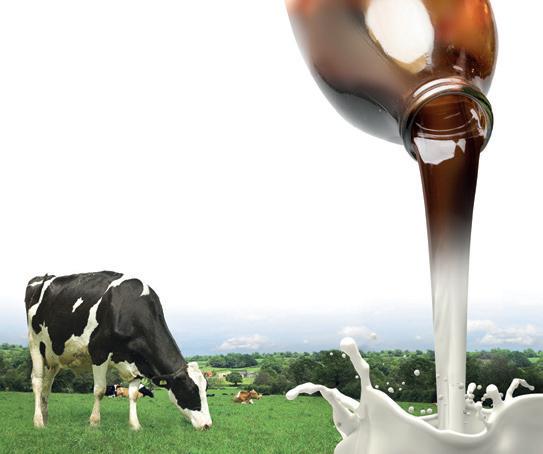

To maximise milk yields from forage remember to add Molasses!
For more information about our extensive range of liquids and to find your local merchant please call us on 0151 955 4850 or visit www.unitedmolasses.com
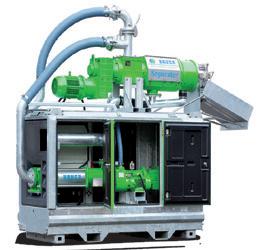

THE BAUER SEPARATOR CONVERTS SLURRY INTO A VALUABLE FERTILIZER.
SUITABLE FOR THE FOLLOWING APPLICATIONS:
• Agricultural applications: Separation of cow, pig and chicken manure
• Food industry: Separation of vegetable waste Slaughter houses: Separation of paunch content
Adrian Tindall 07708 919597
a.tindall@bauer-at.com
• Pharmaceutical industry: Separation of poppy seed mush
• Biogas plants: Before and after fermentation
• Distilleries
Rob Jackson 07939 410417
r.jackson@bauer-at.com
www.bauer-at.com
The Home of Molasses
Before milk, comes molasses
SEPARATOR SYSTEM
PLUG & PLAY
38 MIDLAND FARMER APRIL 2024
Grass & Forage
• Work out a farm forage budget
• Talk soon to silage contractors
• Prepare clean silage clamps
Dairy farmers are being urged to prepare well ahead of the silage season so they are ready to cut at the first good weather opportunity.
Last year, many farmers did not end up taking first cuts until June. Often this was because they weren’t in a position to move quickly enough when the weather eventually became dry enough to get out in the field.
“This resulted in silage of low or variable quality – which has cost many herds a lot in purchased feed or milk yields this winter,” says Lientjie Colahan, from Lallemand’s technical support team.
To minimise the risk of a similar situation this year, Ms Colahan recommends that growers start conversations with their nutritionist, agronomist and silage contractor as soon as possible.
Calculate requirements
“Your nutritionist will be able to help you work out a forage budget based on
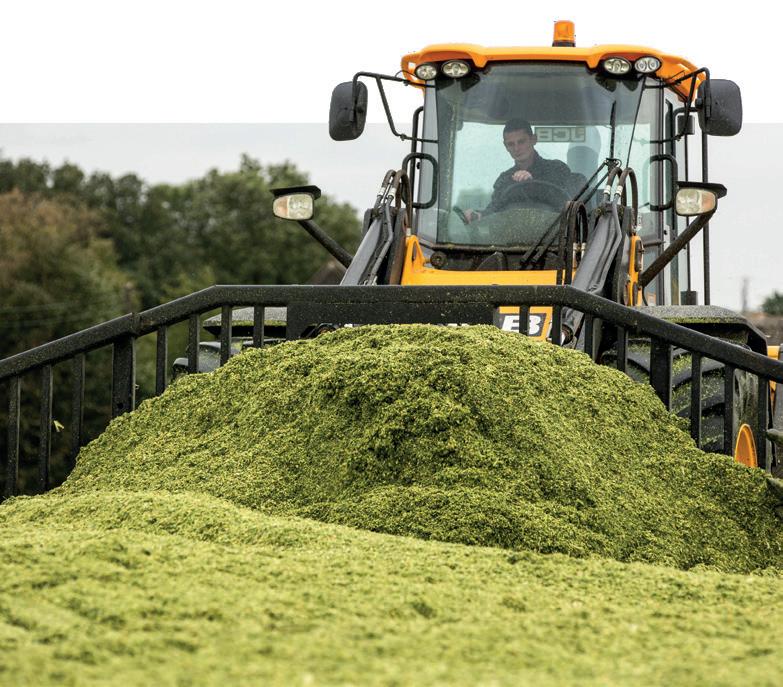
Prepare now for first cut silage success
vice. And when thinking about silage preservation in the clamp, she says that the benefits of using an inoculant should not be overlooked.
“Pre-cut testing helps determine
“A new UK-based trial undertaken at Reading University indicates that using an inoculant on grass silage can improve clamp stability, increase feedable dry matter by 29% and

“ Nutrient plans can be adapted
Latest clamp technology boosts cost efficiency
• Barrier films most effective
• Top layer losses cut by 50%
• Additives stabilise clamps fast
Modern silage films are making the ensiling process quicker and more reliable –and delivering a significant return on investment.
“True oxygen barrier films can help reduce wastage and ensure more of the forage energy clamped is available for milk or livestock production,” says Jim Juby of Horizon Seeds.
“Used properly, they can virtually eliminate top-layer shrinkage losses which means as well as being able to offer cows better quality silage, you’re actually feeding more of it.
“Plus, you will be using a lot less plastic than with other systems. Si lostop films, for example, are 100% recyclable, and the new Orange 45 mi cron film when used with multi-year UV covers can reduce plastic usage by 50%.”
Consolidation is key
Whatever film is used, the key is to keep as much oxygen out as possible with applying wall film the first oper ation to be considered, says Mr Juby.
“Make sure the clamp is as clean as possible then line the walls with side sheeting to make sure oxygen cannot enter through them, this will also pro
Above right: Oxygen barrier films can mean better, more plentiful silage, says Jim Juby
Right:
SilostopMax
the top of the wall so this can be fold ed back over the shoulders once the clamp is full. Make the silage surface as dense and smooth as possible by lots of rolling.
“It’s important to make sure you have enough tractors consolidating fresh material as it arrives. It’s a false economy to have high work rates in the field that then lead to clamp manage ment being compromised.”
Scientific studies have shown that Silostop film reduces dry matter loss es in the top layer of silage by at least 50%, says Mr Juby.
“The top 1m of silage is worth at least £24/m2 of surface area, so using the film will give you an extra £12/ m2 worth of quality feed in the clamp and no waste to fork off the top at feedout.
“If you also use an effective addi tive you can reduce this further. Ap

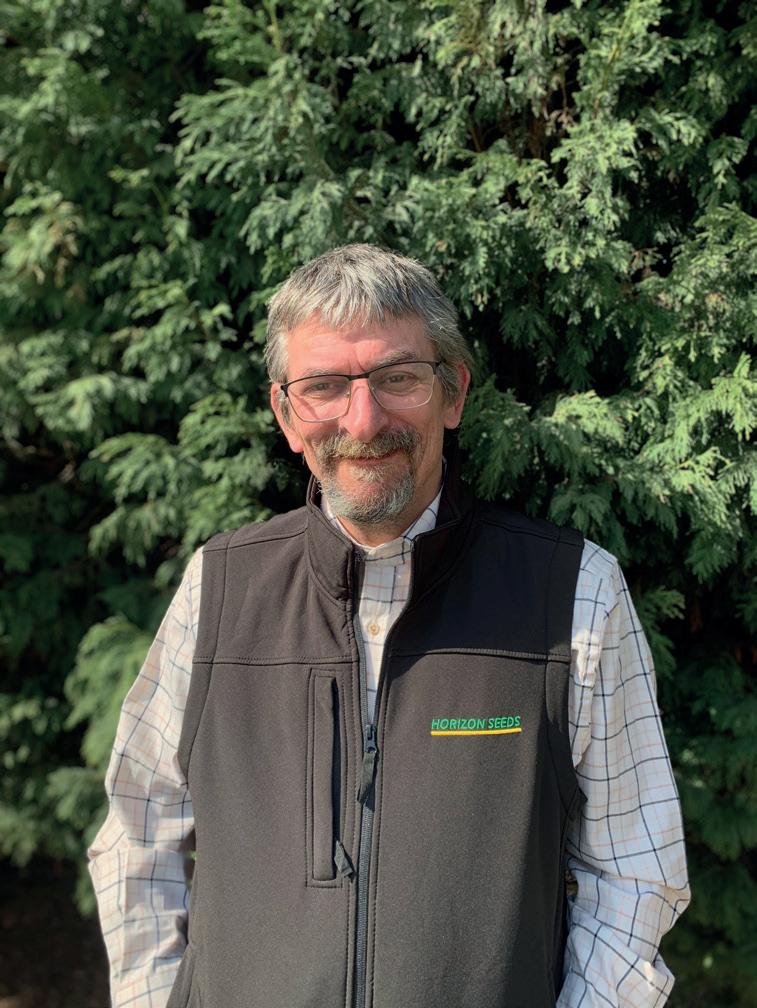
the joins in the film by at least 1.5m. Silostop Max is available in up to 28m wide rolls so there is a size that suits most silage pits.
“Side sheets need to be tucked under the final top sheet to give the best airtight seal possible, this will also ensure that rainwater sheds off the silage rather than decreasing silage dry matter.”
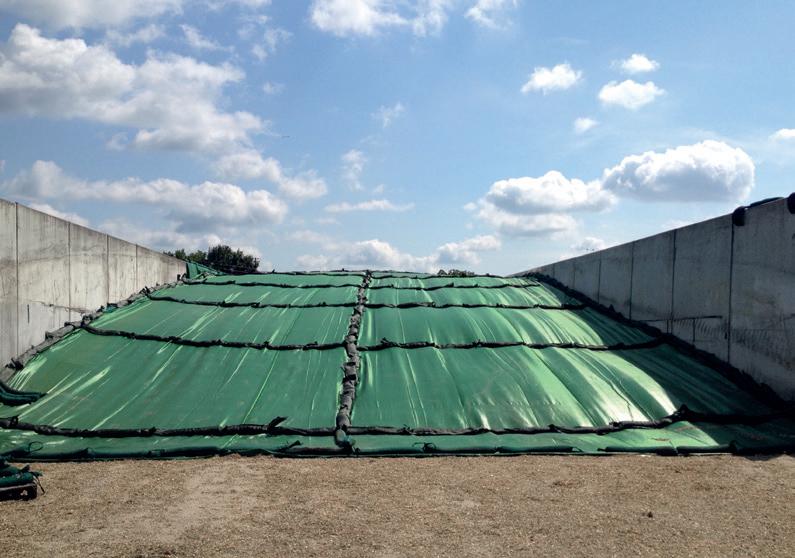
Modern films need suitable protection to make sure they stay in place and remain undamaged by weather and potential pests, he adds.
“This is easily achieved by using a Secure Cover and Silostop Orange film must also be protected from physical damage and ultra-violet light (UV) by an anti-UV net.
“Gravel bags or mats are the best materials for keeping covers in place. Use solid rows of neatly placed gravel bags to provide an effective weight on outside edges and joins.
“Remember, at feed out, always keep a row of gravel bags on the front edge of the film at the top of the feed out face to prevent oxygen ingression underneath the sheet.
“Growing cost effective, quality forage enables costs to be controlled on farm allowing livestock farms to make more money, with correct silage making procedures playing a key role in this.”
40 MIDLAND FARMER APRIL 2024 Grass & Forage
This is nitrogen
AN is 34.5% total nutrient 34.5% N
Nitrogen for yield

This is nitrogen + NUTRITION
Sweetgrass is 33% total nutrient 23% N + 5% SO3 + 5% Na2O
Nitrogen for yield
Sulphur for protein
Sodium for palatability
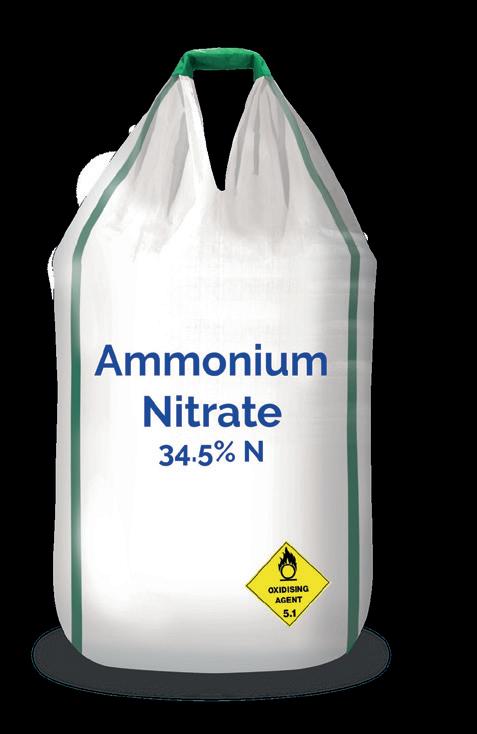

91% of grassland soils are deficient in sulphur and 97% in sodium* *
Sweetgrass
23% nitrogen
5% sulphur
5% sodium
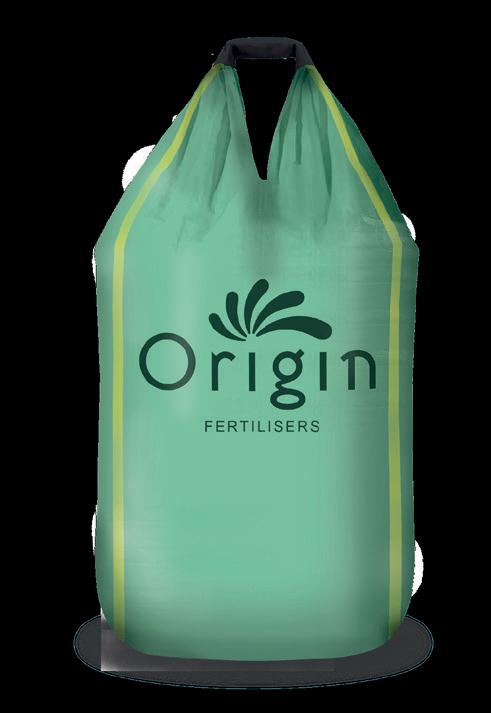







from 1,560 soil sample results
t: 03333 239 230 e: enquiries@originfertilisers.co.uk www.originfertilisers.co.uk
Sweeter grass in every mouthful
Get the most out of multi-species leys
• Nutrient home-grown forage boost
• Different management required
• Focus on end goals when planning
With the Sustainable Farming Incentive paying £382/ ha for planting multi-species leys (MSLs), interest in them is growing rapidly but livestock producers should carefully consider how they fit into forage systems.
While there are many benefits, including increased biodiversity and better soil health, MSLs require a different management regime than typical ryegrass to maximise the benefits, says Agrii agronomist Mark Smyth.
"MSLs are generally made up of grass, legumes and herb species which together create a more diverse forage with greater resilience to climatic extremes as well as contributing significantly to soil structure and fertility.
"Because they're rooting at different depths within the soil profile
and this also helps with growth dur ing dry periods.
"Chicory and Sainfoin also have a natural worming element as they have anthelmintic properties and this can be extremely valuable in some circum stances."
When to plant
Those tempted by the £382/ha SFI payment have 12 months from sign ing up to putting their MSLs in and timing needs some thought, Mark Smyth advises.
"When establishing a full reseed MSL with grass, spring or autumn planting is fine, but if overseeding it becomes more challenging in the spring as seed to soil contact is key and the minimum soil temperature must have reached 8 - 10o C before consid

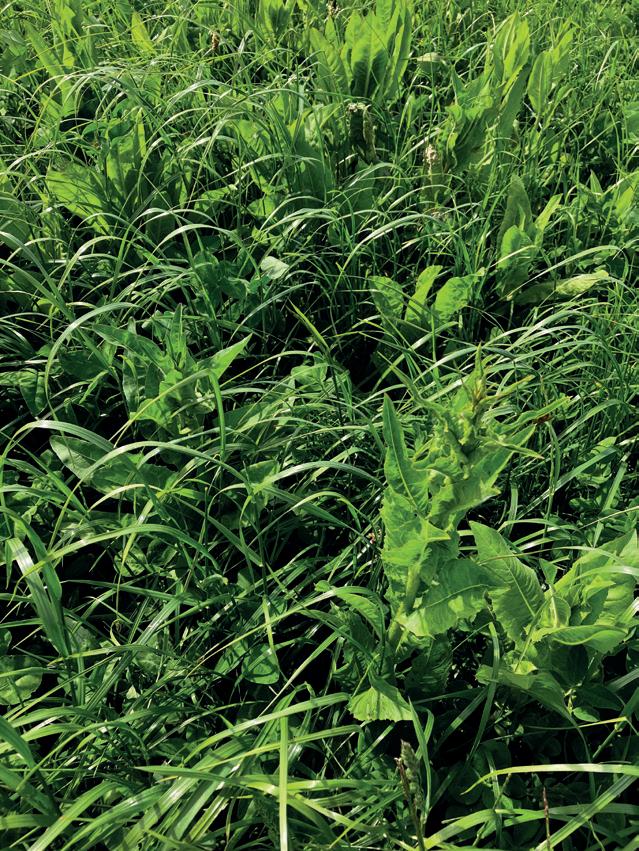
"August or September is often the better timing for overseeding due to less grass and weed competition, however if considering spring it's important to lightly graze afterwards to ensure the new seedlings don't get
Rapidly growing species in mixes, such as chicory, also need
"These will need frequent grazing and should only really be considered for silage-making in a multi cut system, where frequent cutting will stop them becoming overgrown and producing more fibre which could re-
"Managed correctly, MSLs can provide a nutrient-rich home grown forage with significant environmental benefits, underpinned by a healthy incentive from the latest SFI scheme
According to Agrii's forage grass, root and environmental seeds manager Adam Simper, following a systematic approach to planning, establishment and management of grass reseeds, can also help producers get the most out
"The best starting point for a successful reseed is to focus on the end
Multi-species leys can provide a nutrient-rich forage, says Mark Smyth (left)
point," he says. "You need to focus on your end goal and make decisions based on this. So, first of all, decide how long you want the mix to last, then what you want to use it for.
"If you want to both cut and graze, for example, choose a mix containing diploids and tetraploid perennial ryegrass (PRG), whereas if predominantly cutting, choose a mix with a higher proportion of tetraploids.
"If your plan is rotational grazing, then choose a mix that can cope with this style of management and provide good ground cover and quick regrowth. If intensively tight grazing, then use a mix with a high diploid PRG content."
Most reseed mixes in the UK contain both diploid and tetraploid PRG but there are also other types of ryegrass and species used such as clovers, herbs, Timothy, cocksfoot, and in recent years Festuloliums, he points out.
"Each of these species has different growth and quality characteristics so it is important to select the most appropriate one for your ground and situation so talk to your grassland advisor at an early stage. "
Grass & Forage


The JCB Folding Grass Forks are perfect for the handling of silage or any loose material. Extensively tested to ensure efficiency and productivity and maximised for your machine, available in 12ft, 14ft and 16ft wide models. Scan the QR code for more information and to request a price.
Contact your nearest JCB dealer for a demonstration. Telephone: 0 800 581761 www.jcb.com
A new dimension in handling

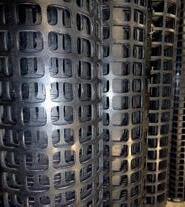


















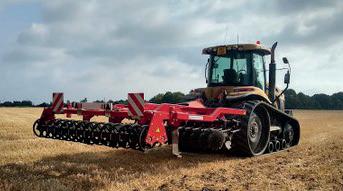

Leicestershire & Warwickshire Country Link An informal social group for anyone interested in the countryside For more info, call 01455 290336 • www.country-link.org.uk Activities include: Country walks and visits • Guest speakers • Farm walks • Social events Almost Nationwide www.countrywidepublications.com YOUR FIELD IS OUR FIELD Midland Farmer Anglia Farmer www.angliafarmer.co.uk www.midlandfarmer.co.uk 01502 725844 •Rubber grading screens •Rubber web covers •Sample riddles •Perforated washer belts The leading UK manufacturer of rubber grading screens for all types of grading equipment Contact AGRI-WEB Ltd Tel: + +44 4 (0) 2891275913 Web: www agri-web co uk Ema l: nfo@agri-web co uk The leading UK manufacturer of rubber grading screens for all types of grading equipment. • Rubber grading screens • Rubber web covers • Sample riddles • Perforated washer belts Contact AGRI-WEB Ltd Tel: 02891275913 www.agri-web.co.uk Email: info@agri-web.co.uk Following the success of the trailed versions of the Progressive Cultivator, we are pleased to now offer a more costeffective alternative. A fully mounted model which suits larger horsepower wheeled tractors and smaller tracked machines. Comprising of Discs, new Low Disturbance Tines and an all-weather compatible Packer. Trialled in 2022/23; in some cases it outperformed the larger trailed versions on output and cost per acre basis. Call now for more details on the 01245 321930 www.keeblebrothers.co.uk “The best kept secret in the South East” Cultivators & Subsoilers 01245 321930 www.keeblebrothers.co.uk 44 MIDLAND FARMER APRIL 2024
Professional services
Building blocks for a new countryside
building plot become overgrown or fall into disrepair because the council might be keener to see it developed.

EXPERT VIEW
The forthcoming general election could have big implications for development Will Mackenzie.
submitted via a form downloaded from the authority website, but providing the right information at the right time will put you in a strong position.
It's free to do this and we don’t charge people to help, but it’s important to engage in this process as early as possible. It doesn’t commit you to subsequently make the land available, but it puts it on the local authority’s radar.
But now, with the new Biodiversity Net Gain (BNG) regulations, it’s important to make sure it’s well maintained and farmed as you would any other piece of land. If you leave it to grow over, its biodiversity value could rise, which would result in you (or a developer) having to provide more BNG units as part of any project.
For those who do have opportunities, choosing a developer to enter into an agreement with is a key decision. Remember, ultimately this could be a 10 or 20-year relationship. It’s important to choose a reputable firm with a sound business who’s it for the long haul and has the resources to ‘promote’ your site – and take it from the point you sign the development agreement to them getting planning permission.
Sensitive task
by a belief that a Labour government would kickstart the housing market in a way that brings many new opportunities.
Restrictive policies, red tape and a lack of resources in the planning system have meant housebuilding has come to a virtual standstill in some areas, but Labour has been very vocal about its intention to get more houses built.
“Backing the builders not the blockers” is a phrase they’ve used.
Of course, selling any size plot for this pur
Different authorities have different approaches – some preferring a small number of large developments, others opting for a large number of smaller ones. But if you have land adjacent to a settlement boundary or a site part of which has already been developed (so there is a precedent) it’s worth engaging with the authority.
Think long term, too. Maybe you have land that’s two or even three fields away from the current settlement boundary. In 25 years –
How a developer acts also has a big influence on community relations. How they approach the often complex and usually sensitive task of seeking planning permission will affect not just their likelihood of success, but also how local residents regard you. Development agreements can also take different forms to suit your requirements which is something we regularly advise on.
One implication of recent delays in the planning system has been a relative scarcity of sites coming to the market, so landowners are in a strong negotiating position. Depending on a raft of factors, particularly location, development land is currently changing hands for £250,000 to £1.25m/acre.


For long-term development agreement, vendors should include a clause stating that if taxes on development land rise over a certain percentage, then the agreement can freeze for a set period (often between two and ten years).
Of course, the countryside needs protection against excessive and inappropriate development. But a lot of landowners are seeing the next few years as a time when development opportunities could be unlocked.
In years gone by, the prospect of a Labour government would have been a thoroughly troubling prospect for many farmers and landowners. But if Keir Starmer gets the keys to Downing Street, many will view higher capital taxes as a ‘necessary evil’ to turn the key on additional – and expedited – development opportunities.
Will Mackenzie is a director of Rural Insight Land & Development, a Leicestershire-based firm of chartered surveyors. For details, call 07471 354214 or email will.mackenzie@rild.co.uk.
APRIL 2024 • MIDLAND FARMER 45
Labour under Keir Starmer is promising to 'back the builders'




For farmers looking to plant trees, we offer a unique partnership to design, plant and manage the trees and sell the carbon units for you.
Simon a call on 07825 193278 or email: enquiries@tilhill.com tilhill.com
Give

Road wars
Tractor drivers and motorists both need to calm down on country lanes
– before more people get hurt, says Clodhopper.
Agrowing population and the rush of modern life mean traffic on our roads is busier and faster than ever. That goes for major routes and our country lanes too – as more people try to reach their destination while avoiding the traffic.
Most of our rural roads are centuries old. They were designed for people travelling on foot – or at best by horse and cart – often taking hours if not days to travel distances that take just minutes today.
When fast meets slow, something has to give – especially on a single-track road. Little wonder then that the number of accidents involving farm machinery is increasing – often with fatal consequences for those involved.
As a tractor driver, I was always taught to pull off the road at the first opportunity to let traffic pass. Unfortunately, many tractor drivers today appear to ignore that advice – especially larger scale operations carting grain or maize silage.
At the same time, many car drivers fail to
realise that a slow and safer journey is better than fast and furious. Patience on both sides is in short supply. We should all be more considerate of our fellow road users.
Legal limits
Farm vehicles aren’t always to blame. But with foot-heavy motorists treating country lanes like grand prix circuits, our rural roads are increasingly dangerous places for tractors – even when wide implements are within legal limits.
Power harrows and drills are becoming wider and some farmers taking them on the highway are clearly breaking the law. Problems come when oncoming traffic fails to slow down or wide farm machinery simply cannot move over.
The law is complicated. But as I understand it, anything over 2.55 metres needs an escort. And you can apply for a special dispensation from your local police force for moving agricultural machinery especially during peak times.
How times have changed. I was recently in
Farm vehicles aren’t always to blame “
conversation with a 92-year-old retired farmer who could remember driving his shiny New Holland combine harvester through a local city – complete with 10ft header.
Unimaginable now of course. But 30 years ago, I used to travel 10 miles between farms at 6am in the morning to beat the traffic. I never had an issue. Today it’s a different story and such journeys are impossible.
Peak times
One local tenant farmer is unable to access one of his fields due to cars parking on both sides of the road and drivers unwilling to move their vehicles. Other roads are so busy farmers can’t leave their own yards for passing traffic at peak times.
Tractor drivers employed by large farming companies these days seem to have limited experience – yet they are expected to cope with 18-tonne trailers with little knowledge of the countryside around them.
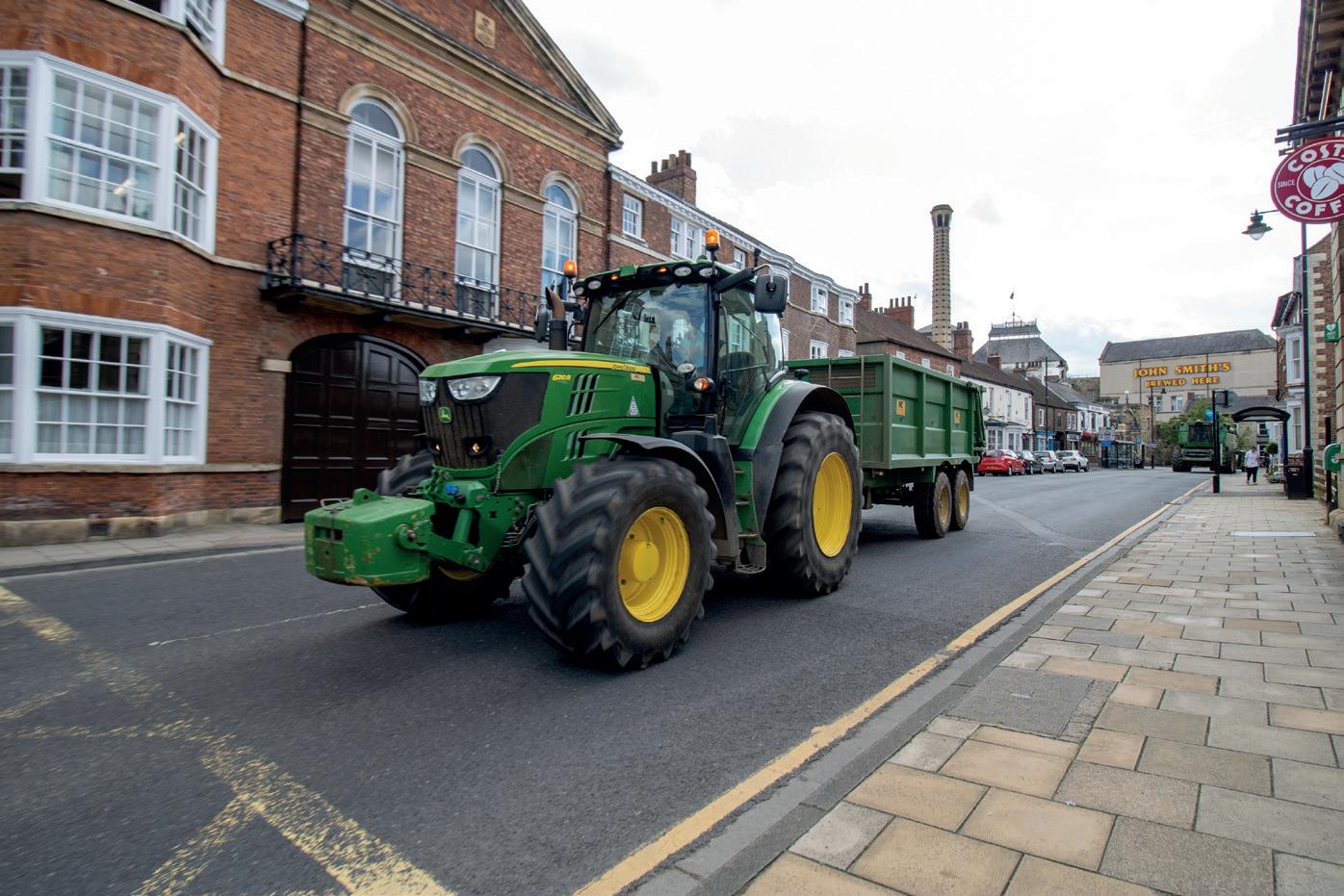
Sadly, most seem to be constantly on their mobile phones while driving – although this is clearly an issue not confined to agricultural vehicles with many motorists also unaware of laws introduced for everyone’s safety.
Not so long ago, some motorists were calling for tractors to be banned from the road – not a blanket ban but at peak times. Not something the industry needs or wants but food for thought while sitting on your tractor seat holding up the traffic.
FINAL SAY Clodhopper
Go My Media / Shutterstock.com
2023

FENDT 211
6 Hrs, Tyres: 440/65R24 (100%)
540/65R34 (100%)
£84,745 +VAT

FENDT 720
7950
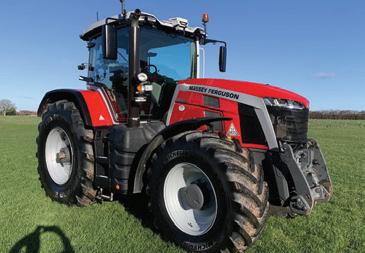


2022

MF 1740M HP
40 HP
Tyres: 7-12 (100%)
95-24 AG (100%)


MF 5711 1000 Hrs, 110 HP Tyres: 440/65R28 (90%)
540/65R38 (90%)




FENDT 828
2100 Hrs, 280 HP, Tyres: 600/70R30 (70%)
800/70R38 (70%)
Profi+ Spec Package, Vario Transmission
£155,000 +VAT 2022
2019

MF 5S.135 EFD4
408 Hrs, 125 HP
Tyres: 14.9R24 W (100%)
18.4R34 WF (100%) £77,850 +VAT
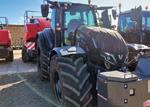



MF 7718 EFD6
3844 Hrs, 180 HP
Tyres: 420/85R28 (60%)
520/85R38 (40%)
£65,950 +VAT


PRESSES



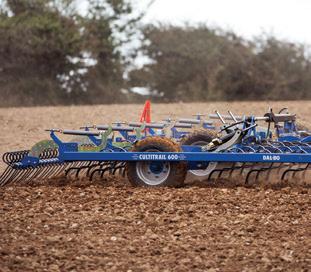

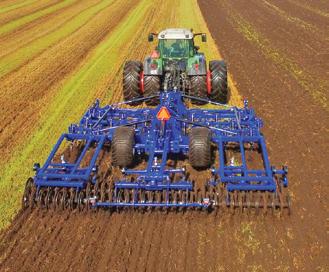 SEEDBED CULTIVATORS
GRASS ROLLERS
STUBBLE CULTIVATORS
FRONT
SEEDBED CULTIVATORS
GRASS ROLLERS
STUBBLE CULTIVATORS
FRONT
Errors and omissions excepted. All prices +VAT NEW & USED STOCK www.chandlers.co.uk
£45,450
2020 0 1000 HOURS LESS THAN
+VAT
£25,450 +VAT
2022 500 HOURS 1000 LESS THAN
500 HOURS 1000 LESS THAN
Hrs, Tyres: 600/65R28 (10%) 650/65R42 (10%) £90,000 +VAT 2021
724
Hrs, Tyres: 600/65R28 710/70R38 £129,950 +VAT 2020 VALTRA T214V ST 5947 Hrs, 210 HP Tyres: 600/65R28 (100%) 650/75R38 (100%) £79,500 +VAT 2019 VALTRA T235D 439 Hrs, 235 HP Tyres: 600/65R28 (100%) 650/75R38 (100%) £146,500 +VAT 2023 500 HOURS 1000 LESS THAN VALTRA T235D 1261 Hrs, 220 HP Tyres: 600/65R28 (100%) 650/75R38 (100%) £123,000 +VAT 2022 1500 LESS THAN HOURS YOUR PROFESSIONAL SUPPLIER OF ROLLERS, STUBBLE IMPLEMENTS AND SEEDBED CULTIVATORS CONVENTIONAL ROLLERS MF 8S.265 EXD7
Hrs, 280 HP
600/70R34 (70%) 650/85R42 (70%)
Closed Centre Spools, Spec Package EXCLUSIVE, DYNA-7 Transmission £102,950 +VAT 2021 SALES | PARTS | SERVICE www.chandlers.co.uk CALL CHANDLERS AG SALES TODAY: Graham Peall: 07970 121109 or Andrew Elms: 07860 464753 SCAN ME TO SEARCH USED MACHINES ONLINE
FENDT
3400
1861
Tyres:
4







































































































































































































































































































































































 SEEDBED CULTIVATORS
GRASS ROLLERS
STUBBLE CULTIVATORS
FRONT
SEEDBED CULTIVATORS
GRASS ROLLERS
STUBBLE CULTIVATORS
FRONT